The Mayan Cultural Triangle.
This post comes from San Ignacio, Belize, just inside the country from the Guatemala/Belize border. After spending near to a month in Petén, Guatemala’s steamy and sparsely populated northern province, we’re now going to carve a loops of sorts through Belize. Belize is a tiny nation with a history and culture very different to its neighbours and we’re looking forward to finding out what this country is all about – we’re long overdue for some beach time too!
Following are some images from our ride east. It’s a short distance as a direct ride, but we were keen to see more Maya ruins, this time two of the sites that comprise the ‘Maya Cultural Triangle’ aka the Yaxha-Nakum-Naranjo National Park. This region was a nexus for trade throughout the Petén Lakes region and has attracted significant archaeological work and restoration, which is ongoing. The national park also includes the island site of Topoxte, 10 intermediate sites and more than 280 smaller settlements.
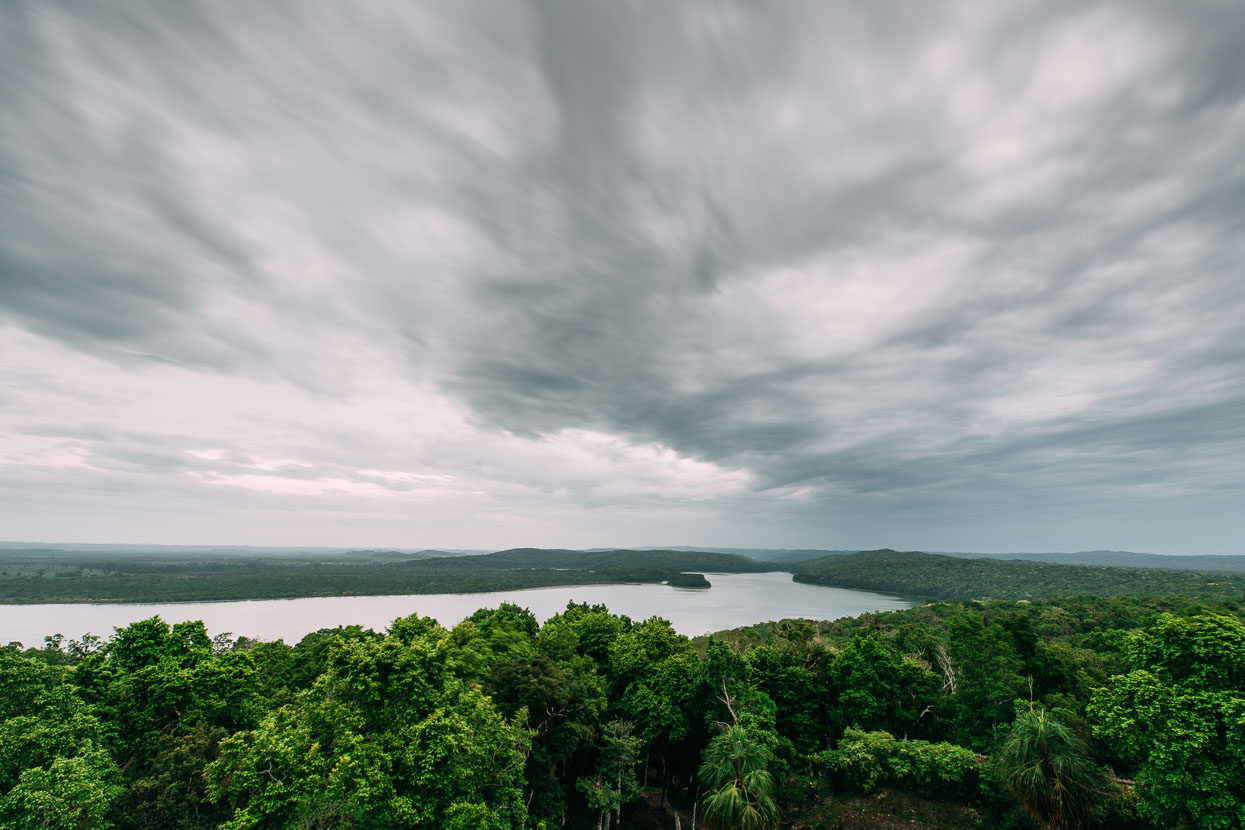
Lago Yaxha and dense surrounding jungle. Photographed from the summit of the Yaxha’s tallest pyramid; Temple 216.
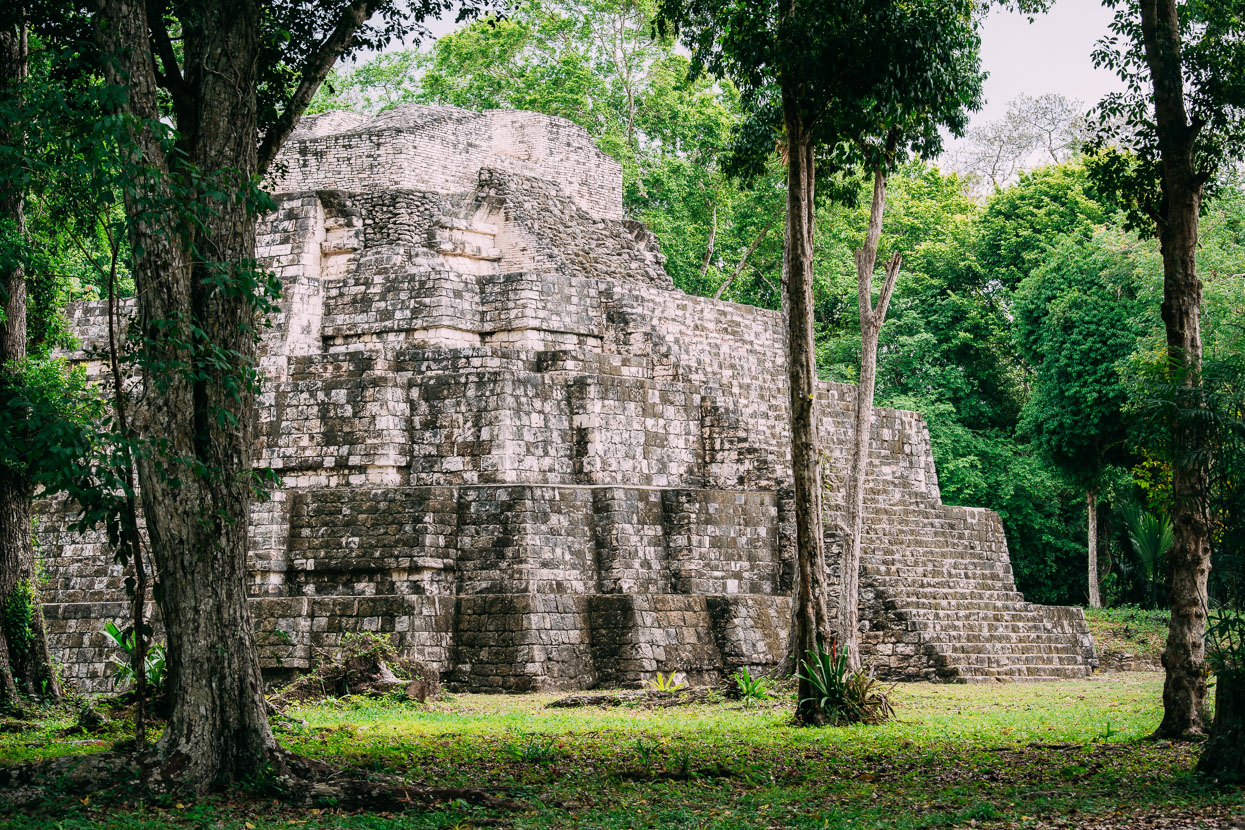
A pyramid temple of the Maler Group, an outlier to the Yaxha site core and accessed via a long and impressive sacbe (elevated causeway). Like Tikal, the thick jungle setting here adds to the mystery of the site, with temples not appearing out of the trees until you are almost upon them. Some have been painstakingly restored, while others have been investigated but left as jungle covered mounds.
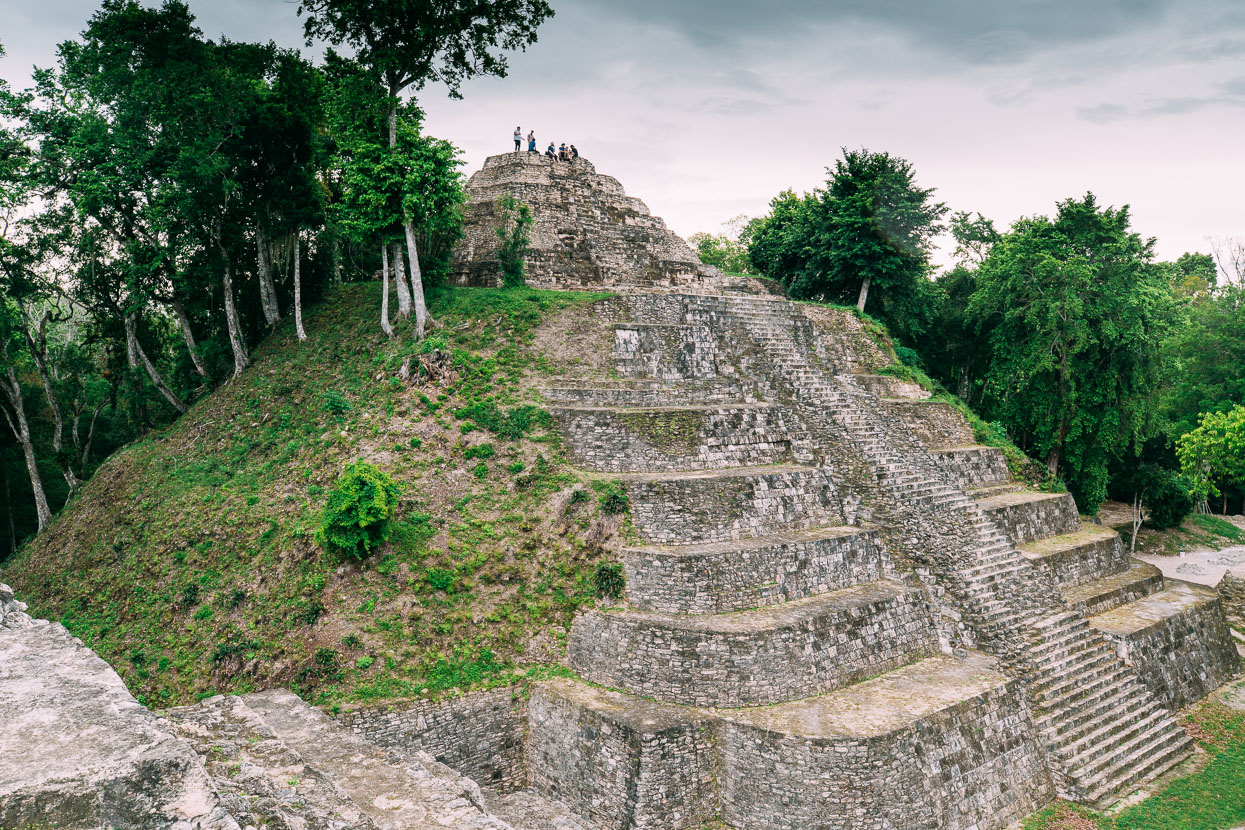
A huge partly excavated and restored temple of the North Acropolis. Refined in scale and style over more than a millennium, these pyramids are a powerful legacy of a civilisation that had no metal tools and no wheels, but a huge and apparently oppressed labour force.
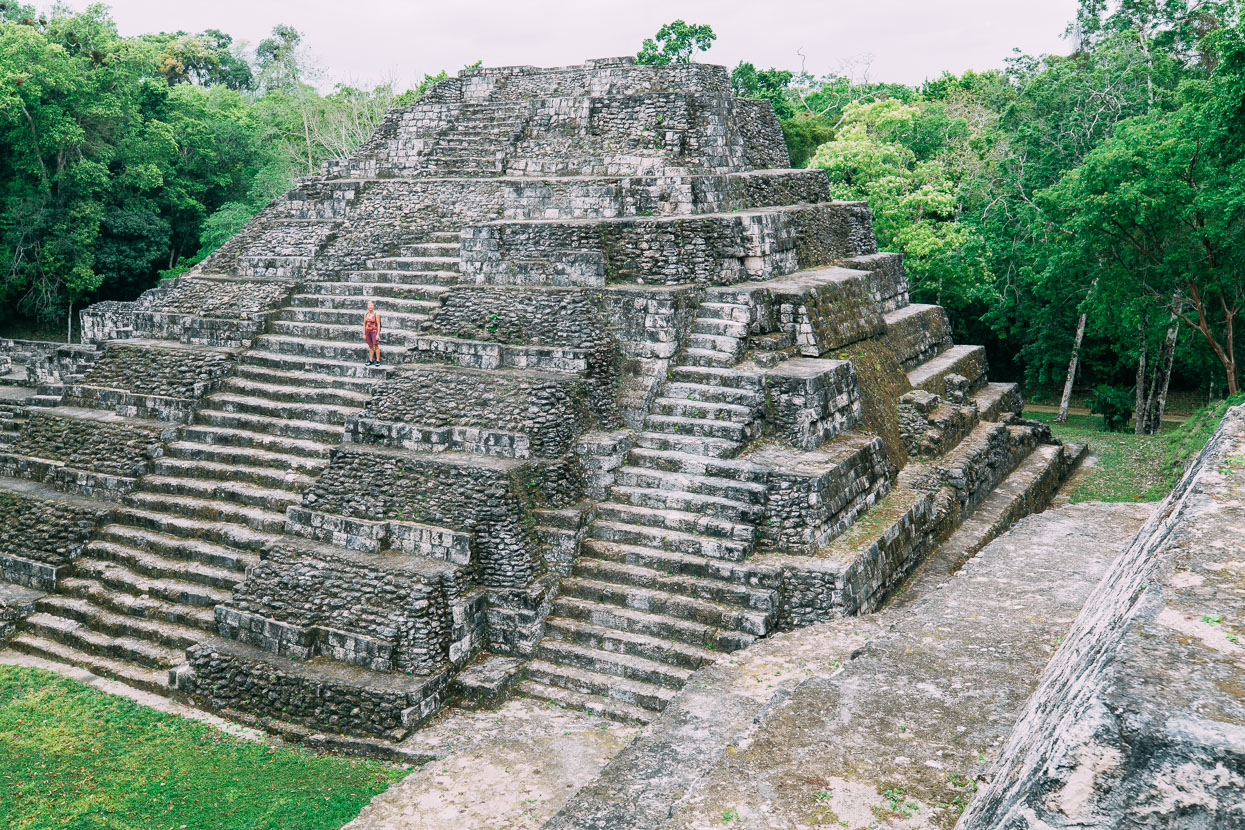
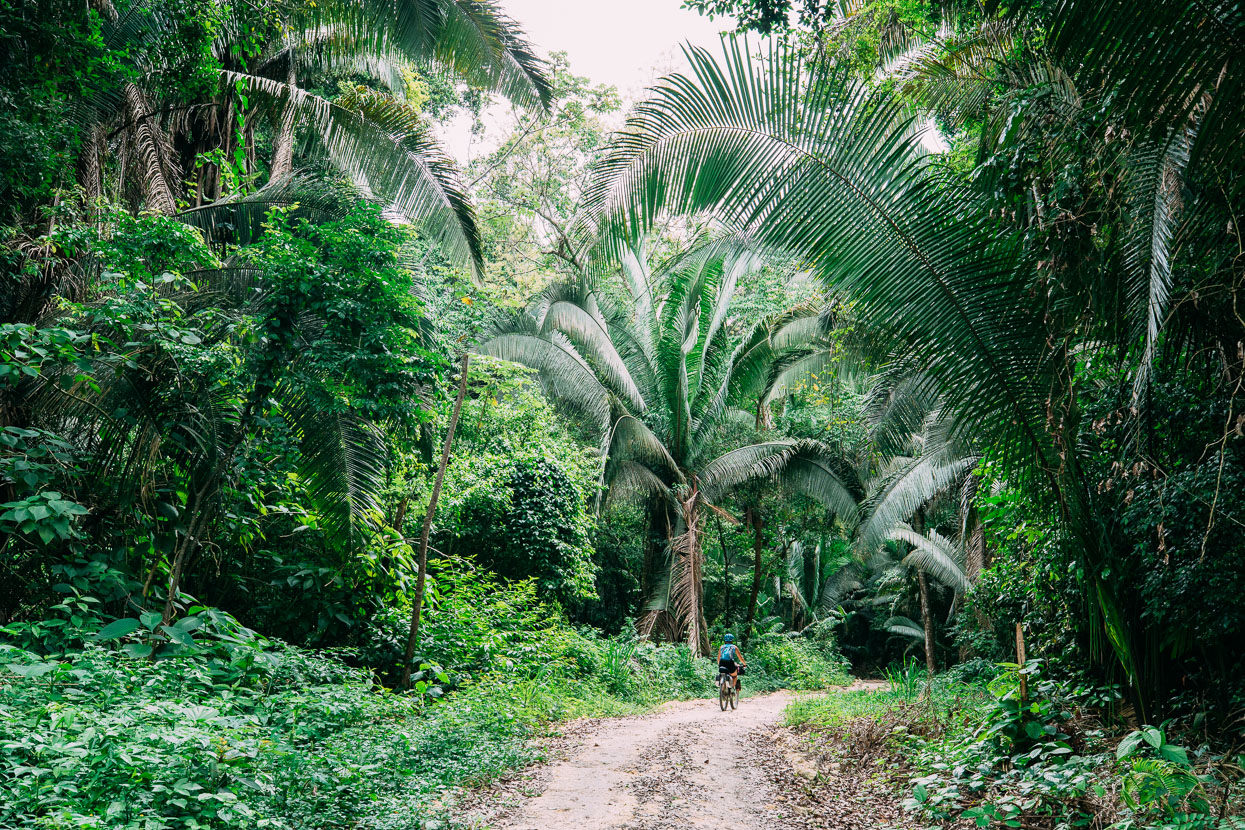
We had an afternoon at Yaxha, camped for the night at El Sombrero Ecolodge and then hit the road the following morning for the border town of Melchor de Mencos. There we stopped at a hotel and arranged with the owner to leave a bunch of gear there to lighten our bikes for the ride in to Naranjo (on the promise we’d spend a night there when we returned). We were glad we lightened the loads: the road was a rough and rolling 20 kilometres. At first it crossed finca (ranch) grazing lands cleared from the jungle but as we neared the national park boundary the jungle thickened. Great palms, vines and thick undergrowth lined the road.
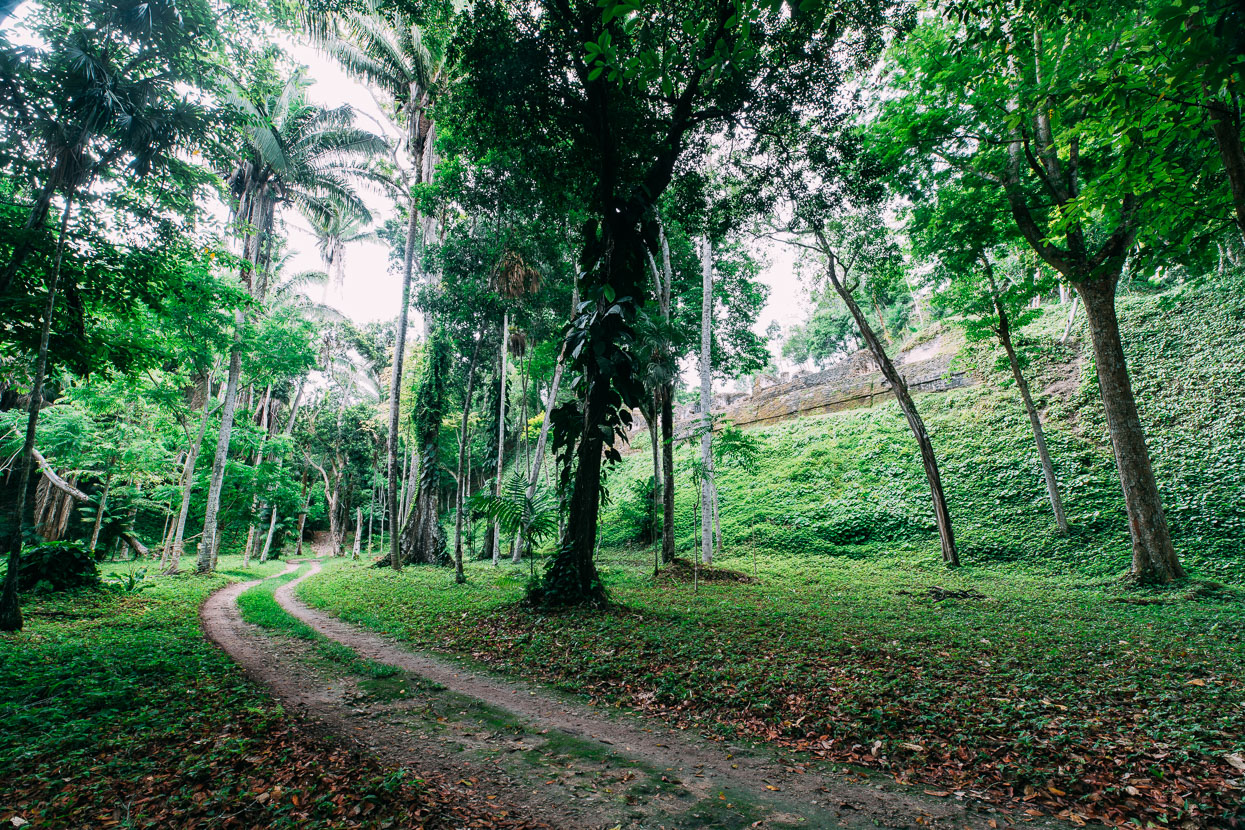
Information on Naranjo is scarce and we had little idea of what to expect there. As we rounded a bend in the road just a kilometre from the site we were surprised to see a cluster of base buildings in a jungle clearing and a handful of people working on a new construction. Naranjo is the last of the ‘triangle’ to be properly documented and restored and the Cultural Triangle work team (including an archaeology team, architect, security and workmen) was relocated here in 2009. Currently there are over 100 workers on site.
It turned out we were quite welcome at Naranjo and the site manager was friendly and happy to have us camp at their base buildings (there is also a palapa/campsite and toilet a bit closer to the actual ruins). The advantage of being at their base was a huge palapa to hang out under and a couple of hammocks! Luxury. While we set up camp a guide was arranged for us and spent the following 2.5 hours wandering around the temple site.
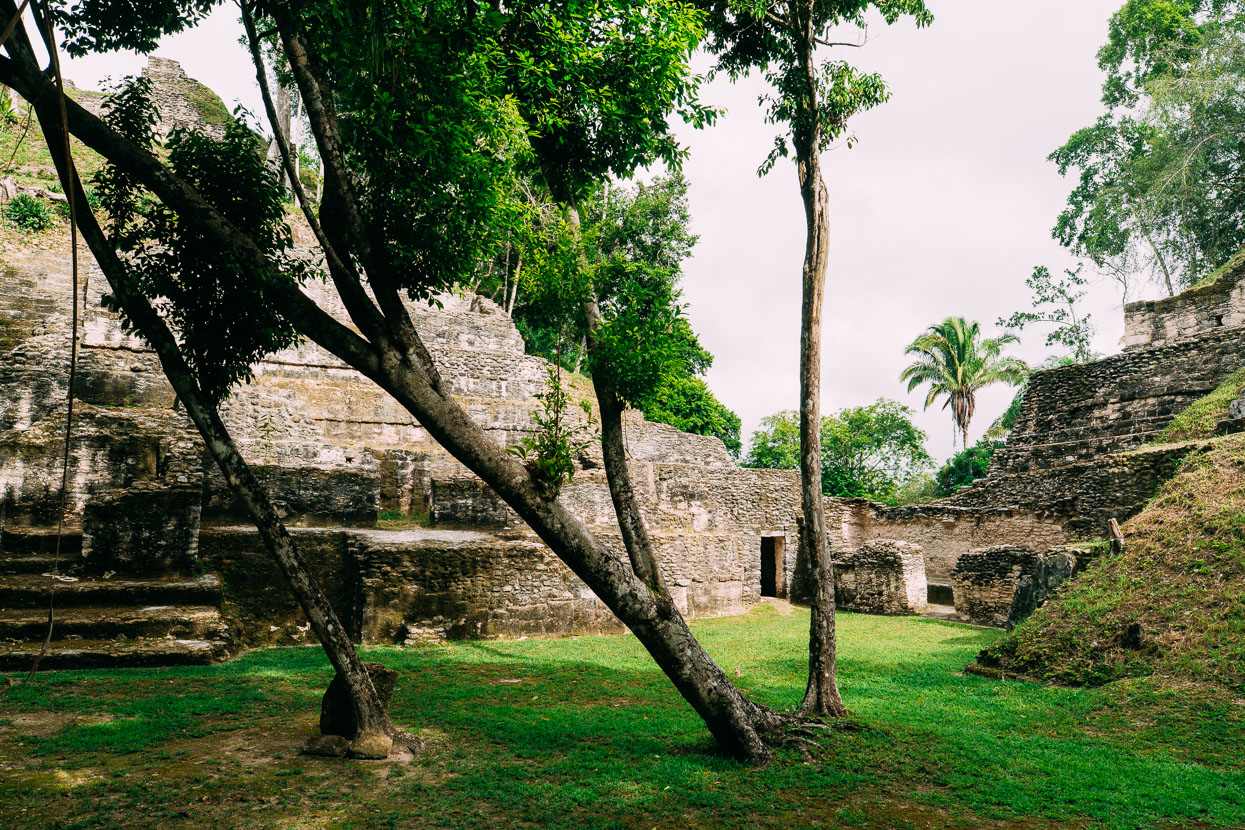
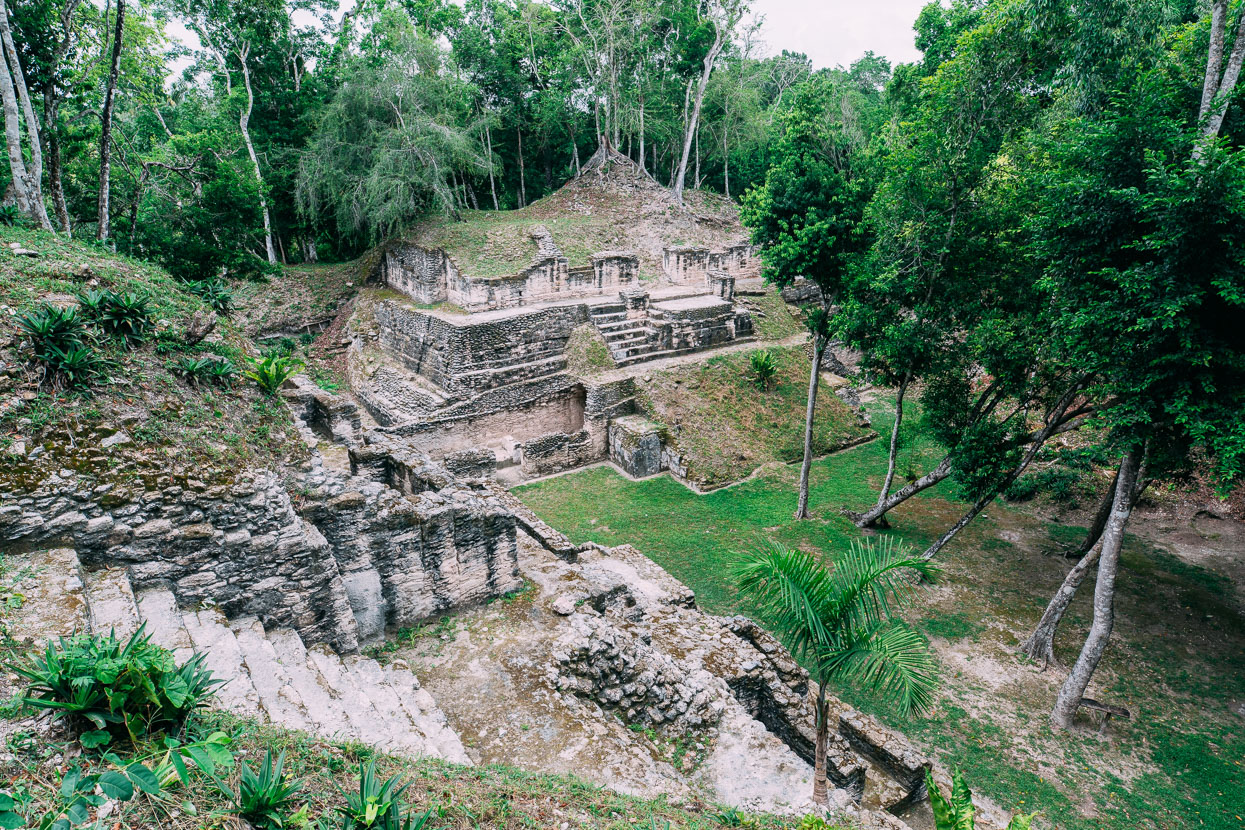
One of Naranjo’s two palace compounds. This huge site’s modern history is somewhat chequered: it was first mapped and photographed in 1905, but by the 1920s, many of the ancient sculptures had disappeared. During the 1960s other remaining stelae were smashed into pieces in order to smuggle them out of the country.
Guatemala’s post civil war climate was taken advantage of by a large team of looters, who controlled the site from 1997–2001. They felled trees over the single access road and when archaeologists tried to access the site they’d have to chainsaw the trees, which would alert the looters who’d flee and hide in the jungle. From 2002–2004, a project was undertaken to evaluate the extent of the looting which found about 270 tunnels and trenches.
We read that, ironically, some of the restoration workers here now were once looters.
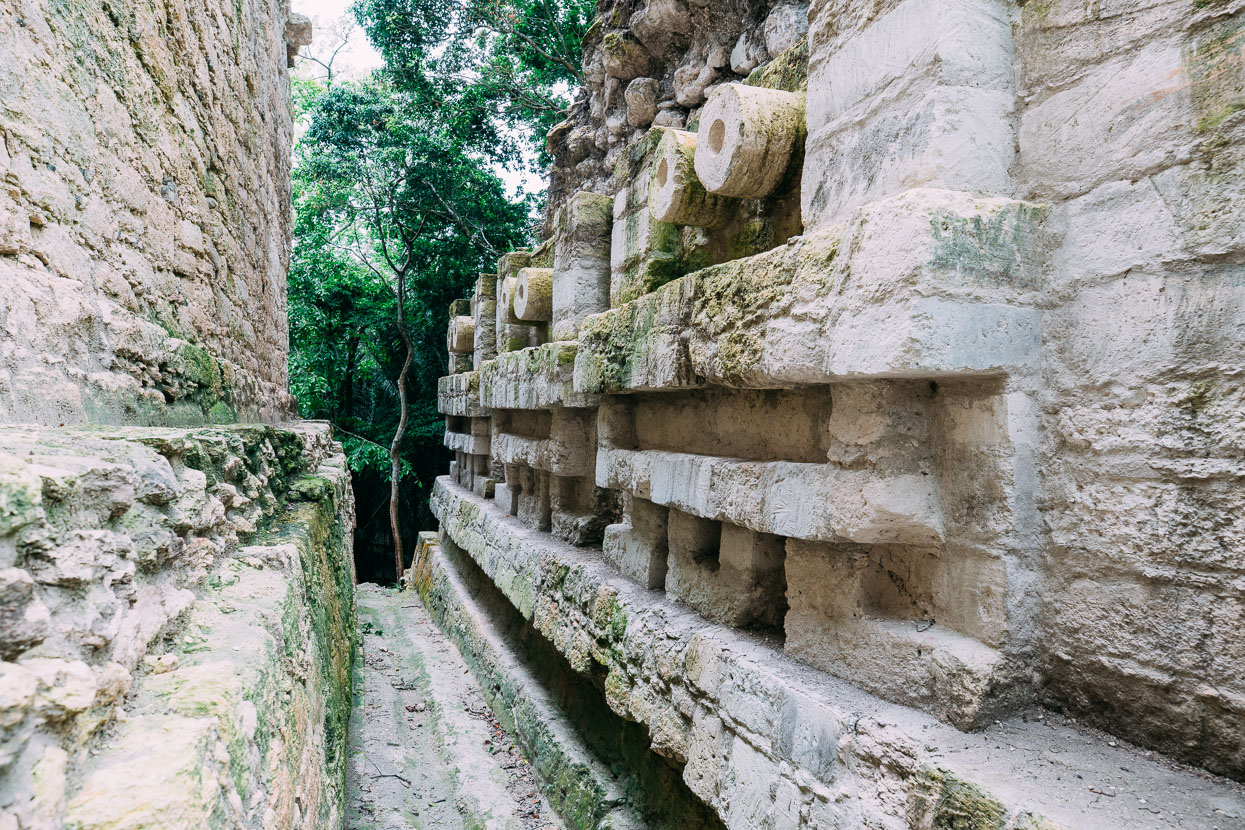
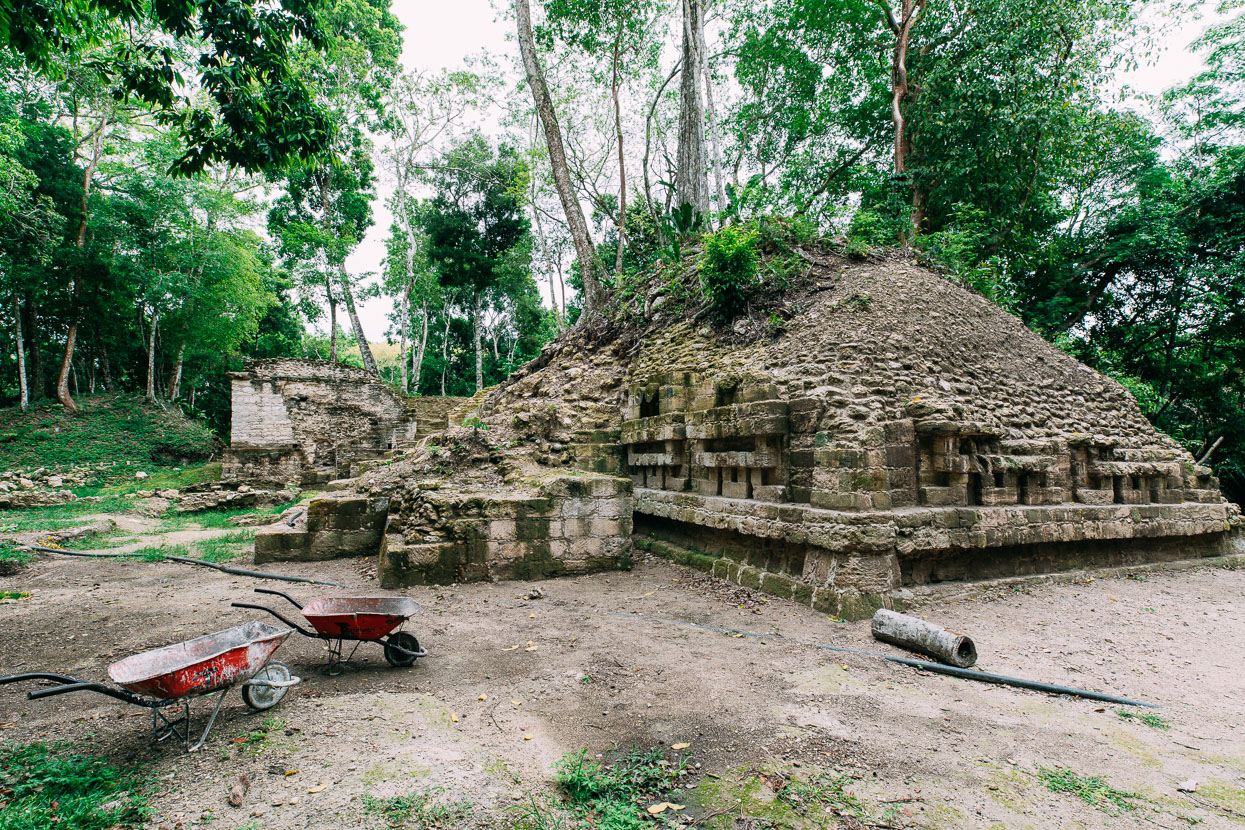
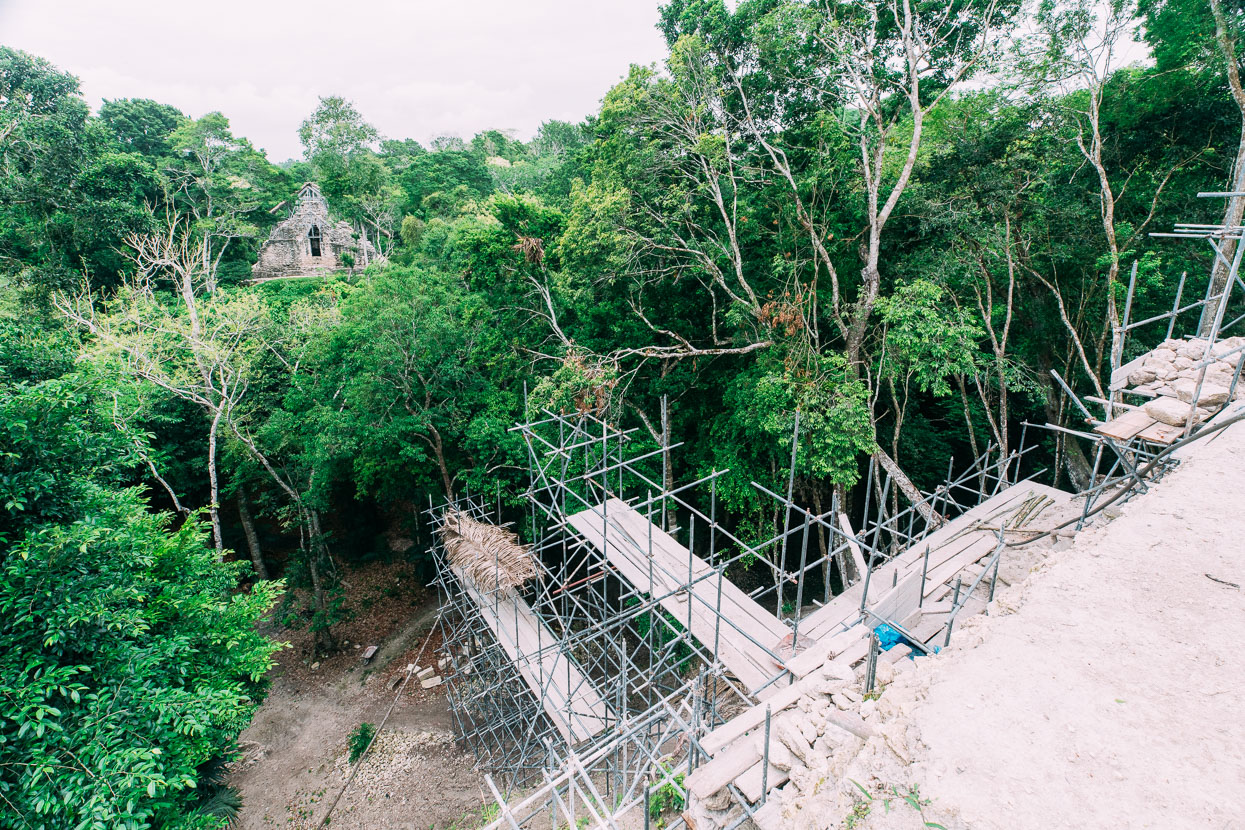
Several structures had scaffolding on them either for stabilisation or for workers who were working on active restoration. Sometimes cutting new blocks to replace those which have crumbled over time, and making lime-based plaster – as the Maya did – to smooth and protect surfaces.
We were lucky to have an enthusiastic guide Anselmo Xac to show us around the site. There’s no map and little signage, so it’s very easy to get lost here. Anselmo normally works as a vigilante (security) at the site. He’s from Poptun (about 250 kilometres away), has a wife and four children and works 22 day blocks at the site, then taking 8 days off.
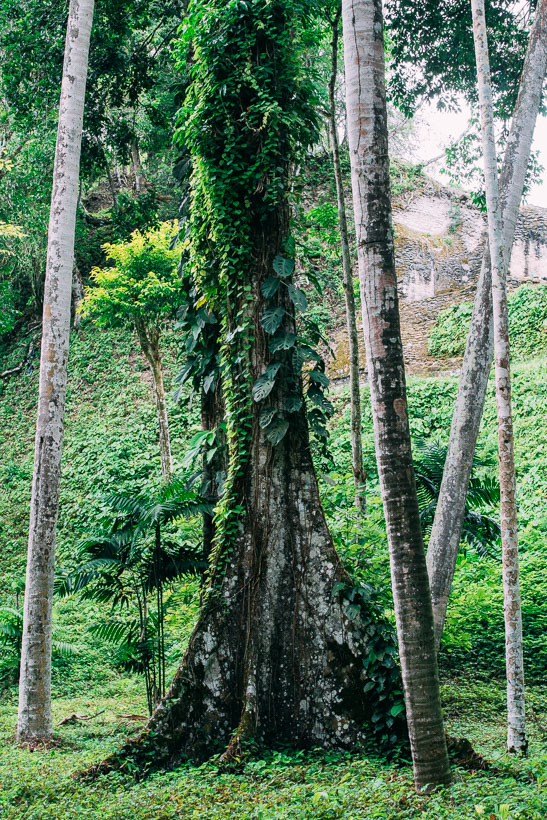
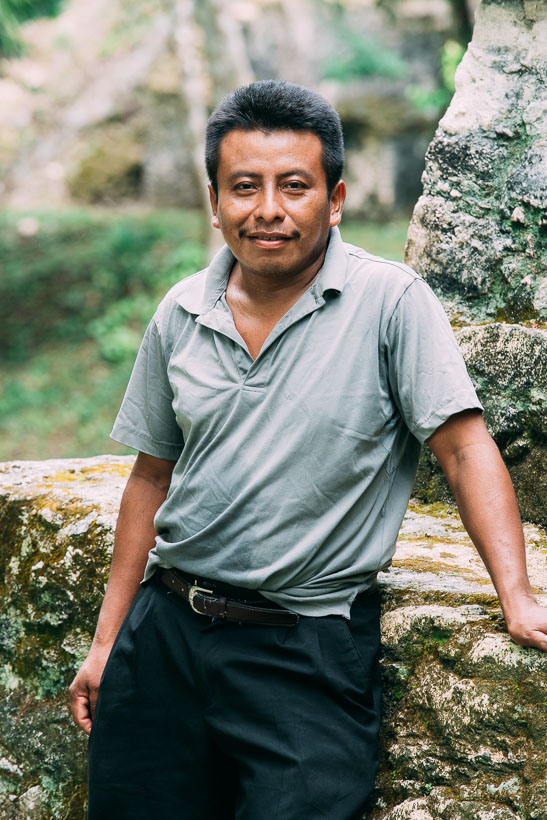
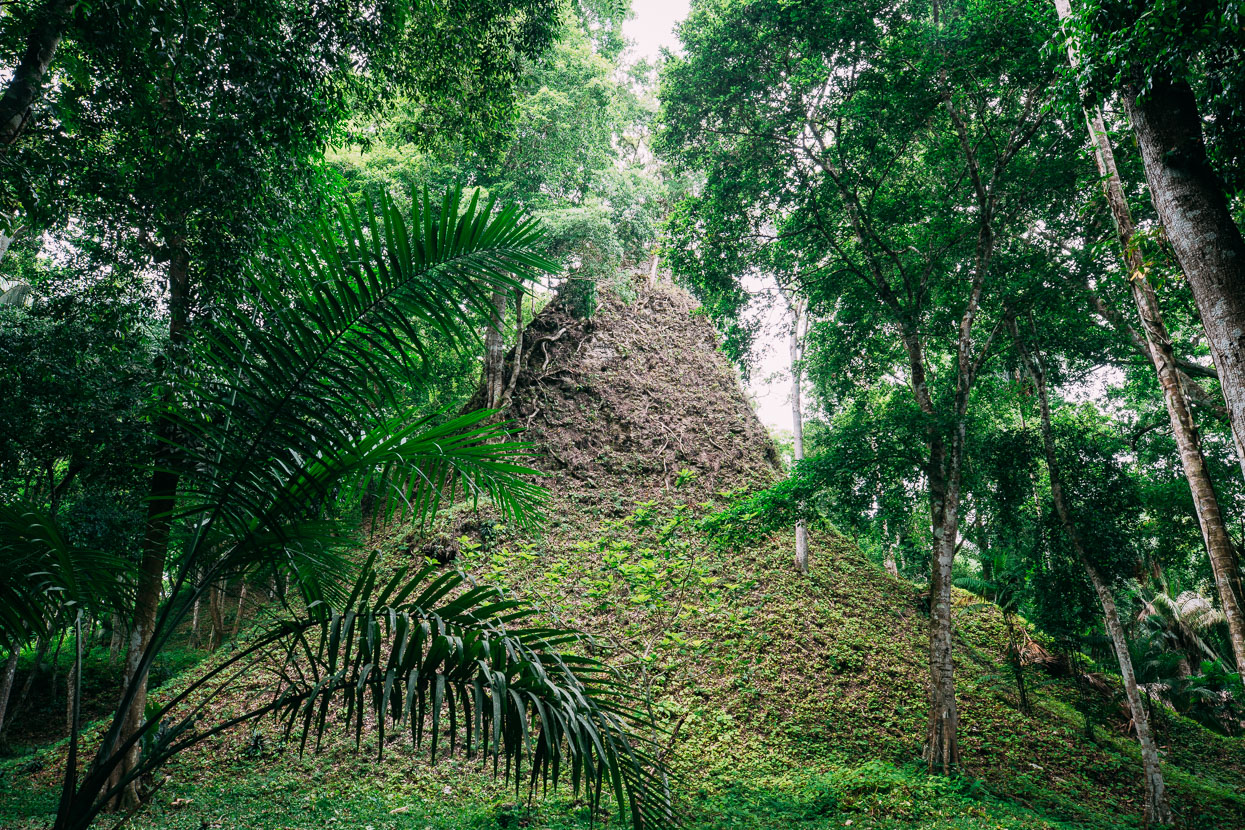
Like Yaxha many big temples are still completely under jungle and barely investigated.
Below left Encyclia cochleata.
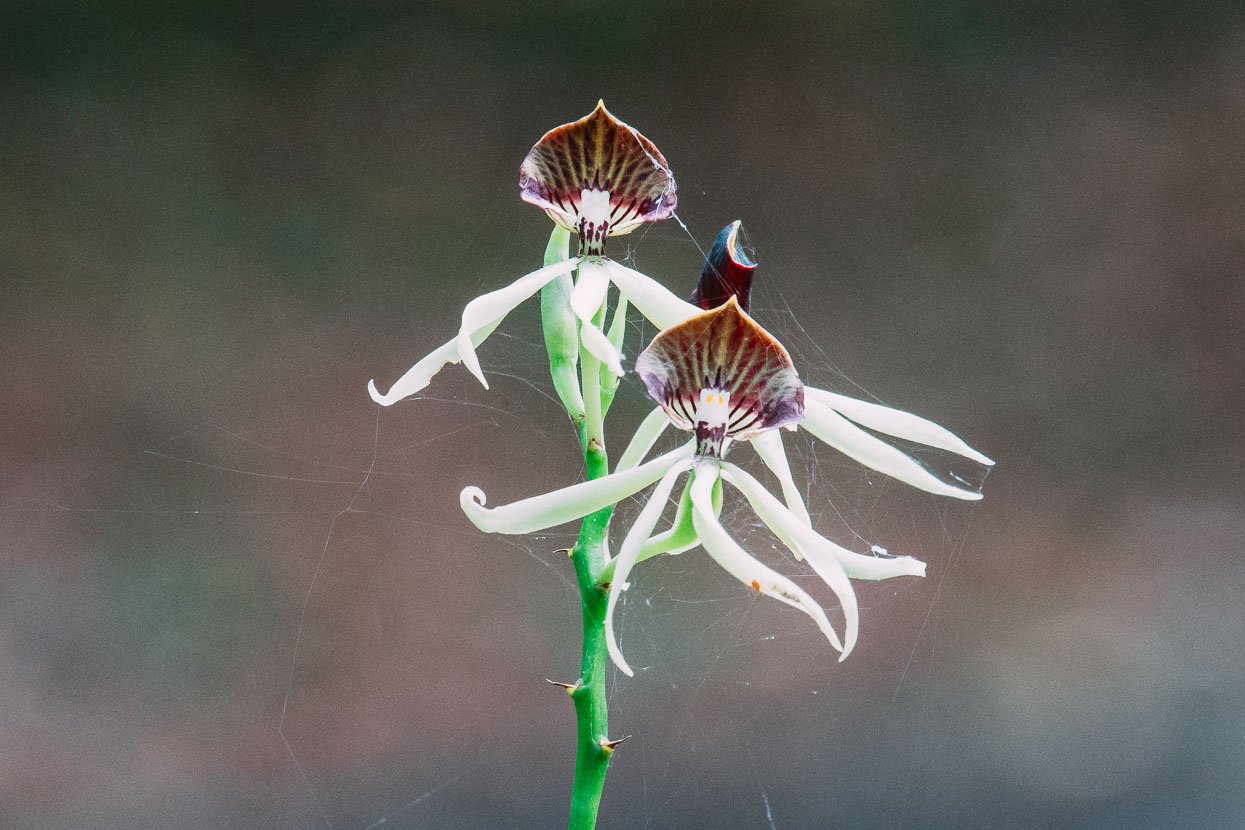
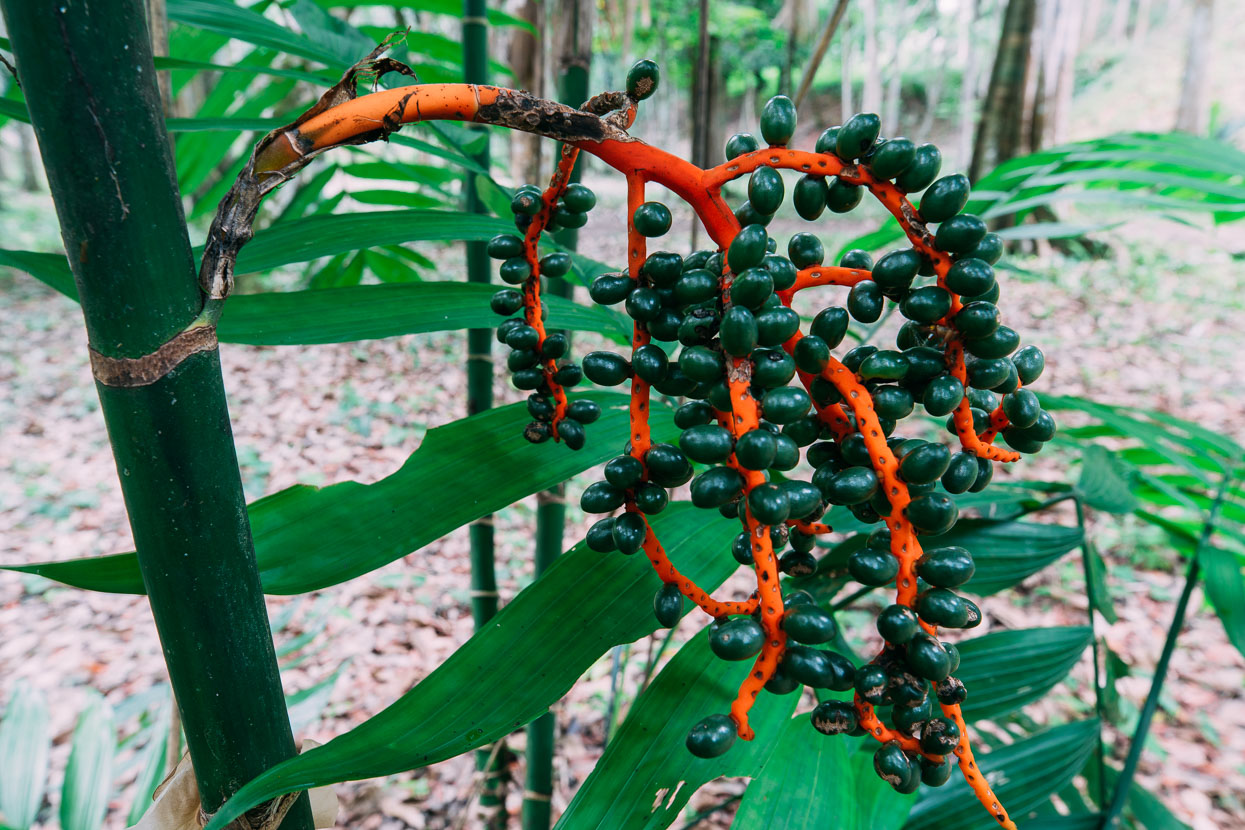
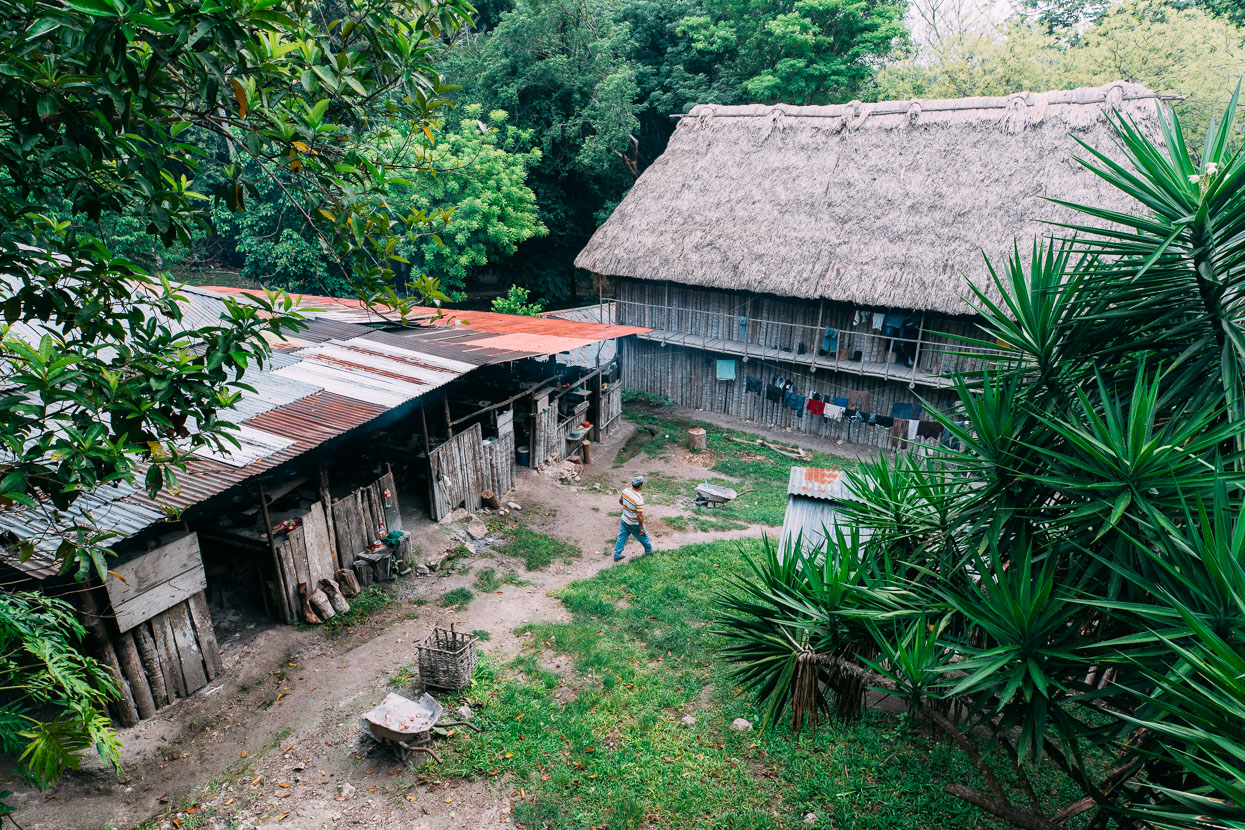
Workers cook/dining house and accommodation.
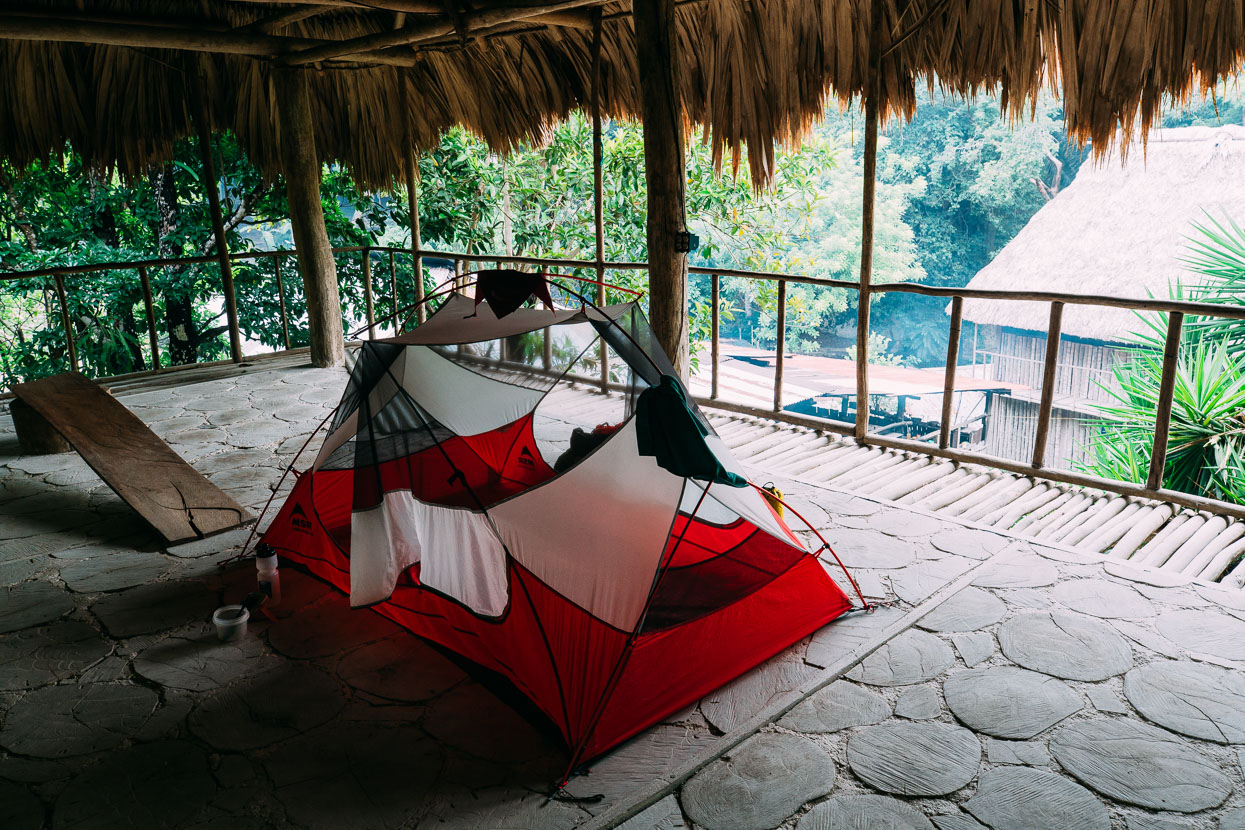
Lately we’ve come to think of our tent as a freestanding mosquito net. It’s rare that we need the fly – as we often seem to end up using it beneath some sort of rain/sun shelter.
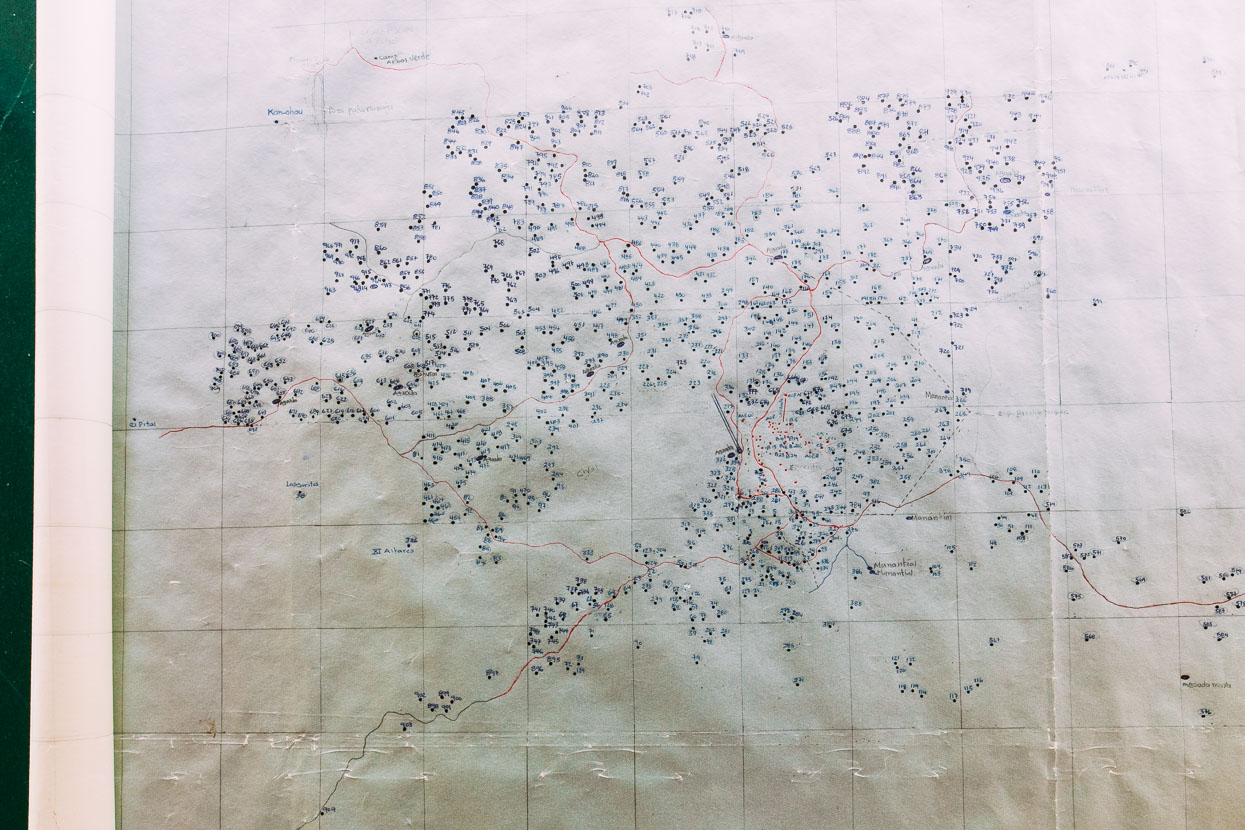
A chart of GPS points indicating Maya ruins or sites of interest. The red dots right of centre are the Naranjo site core (which took us 2.5 hours to slowly walk around). It’s a huge area.
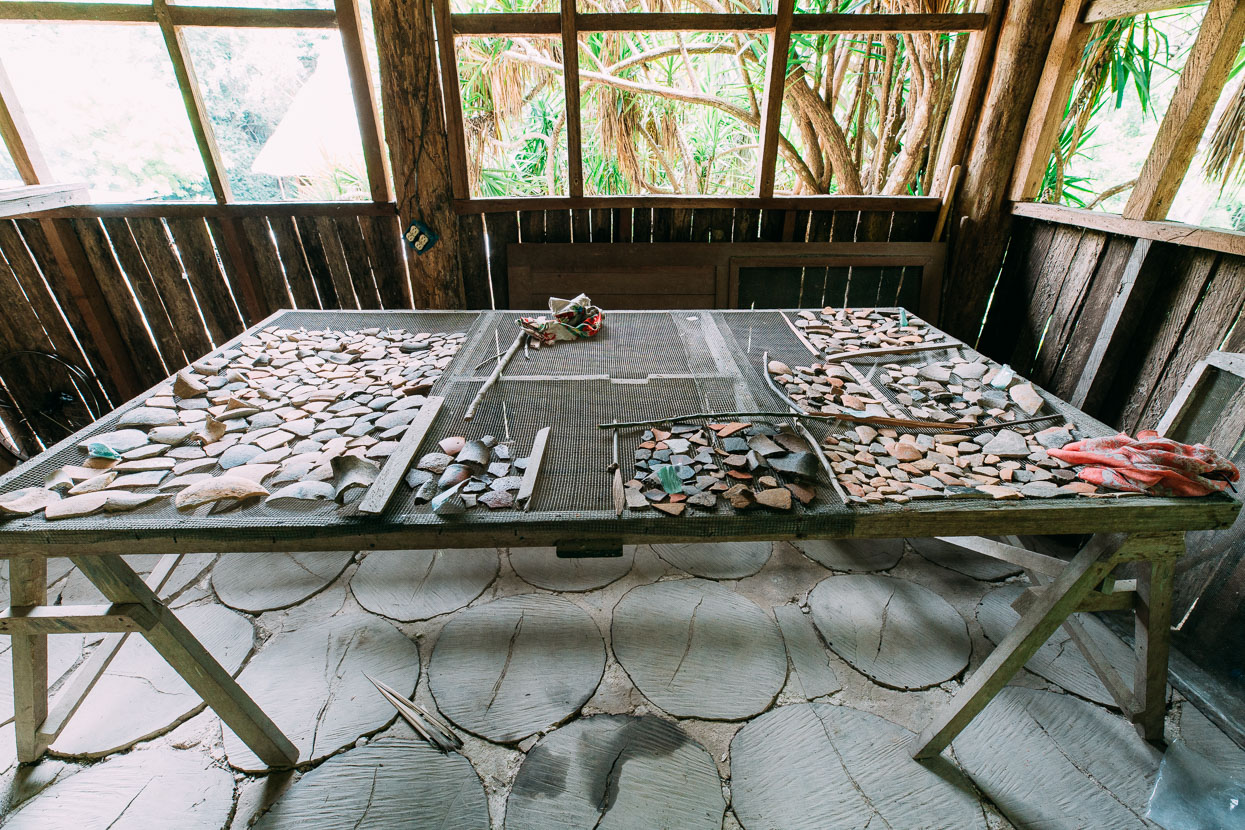
Pottery fragments.
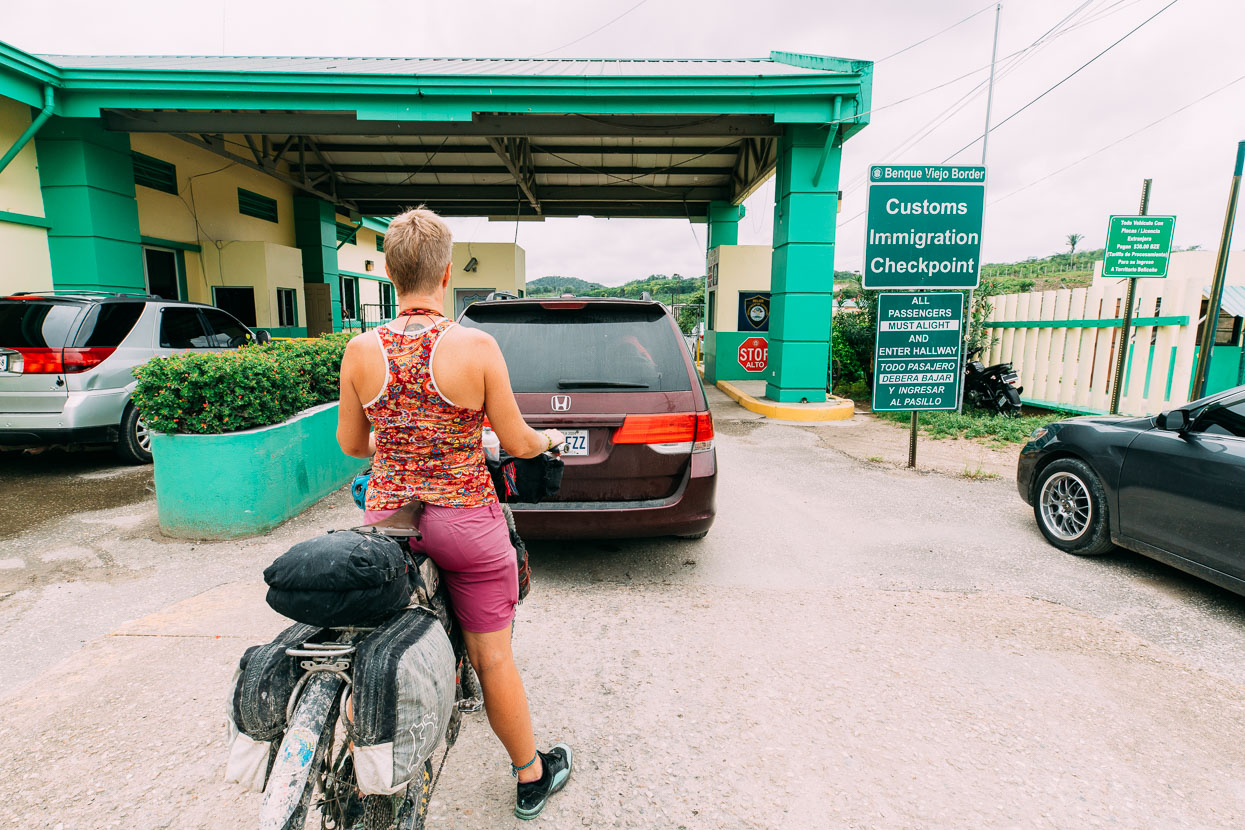
We explored Naranjo more again the following morning and then biked back out to Melchor de Mencos though a heavy thunderstorm. It’s an uninspiring town, but with Hana recovering from a stomach bug and being soaked and covered in mud we decided to stay the night, before crossing to Belize the following morning.
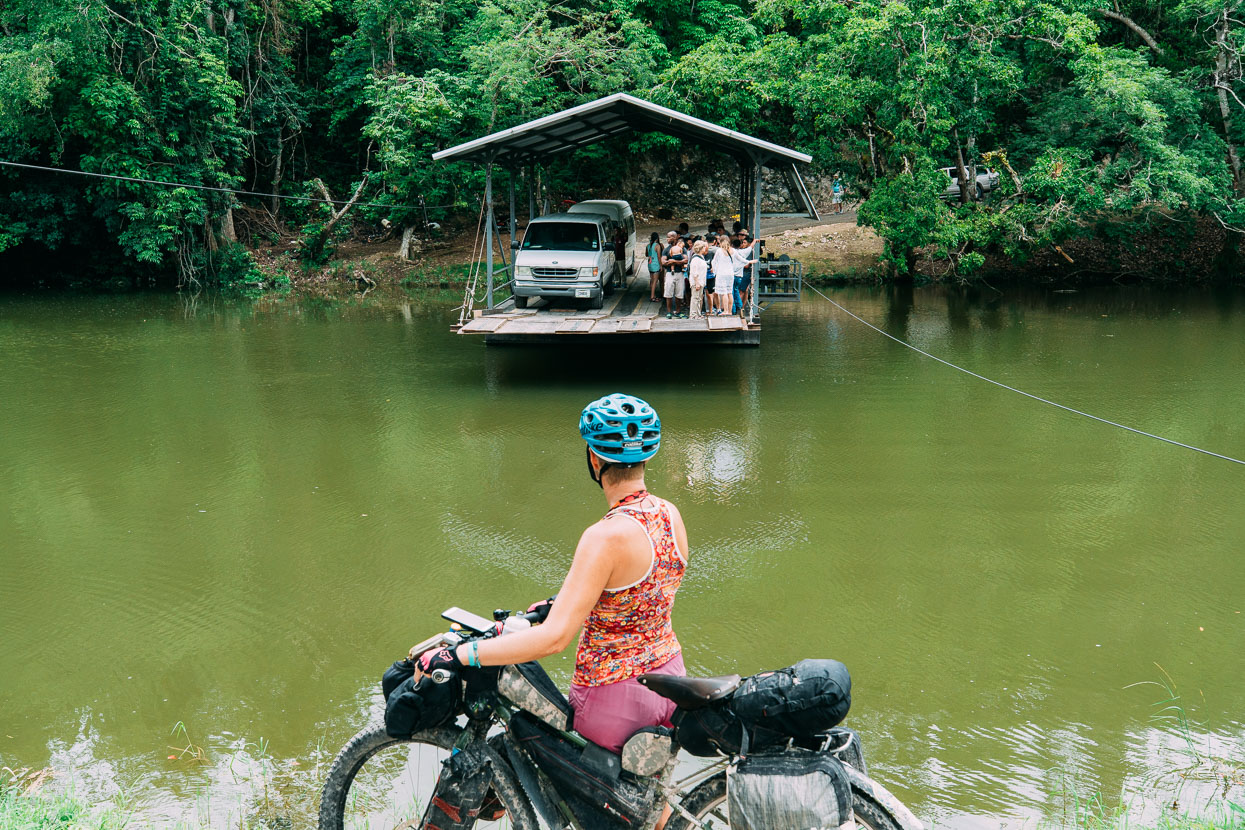
Hand-cranked ferries are a thing in Belize – this one taking visitors to and from yet another Maya site, Xunantunich.
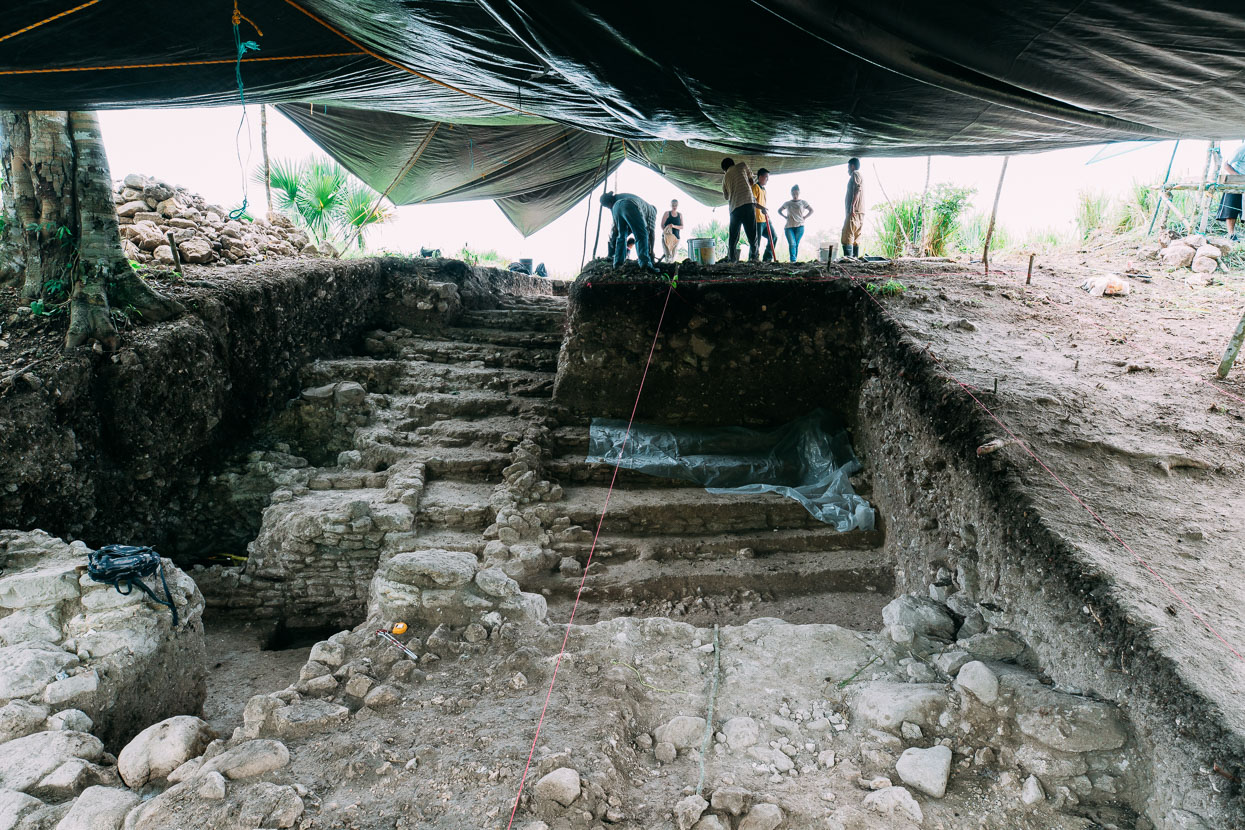
We only had a very short ride to San Ignacio so decided to check Xunantunich out, passing this current dig on the way up the hill to the site.
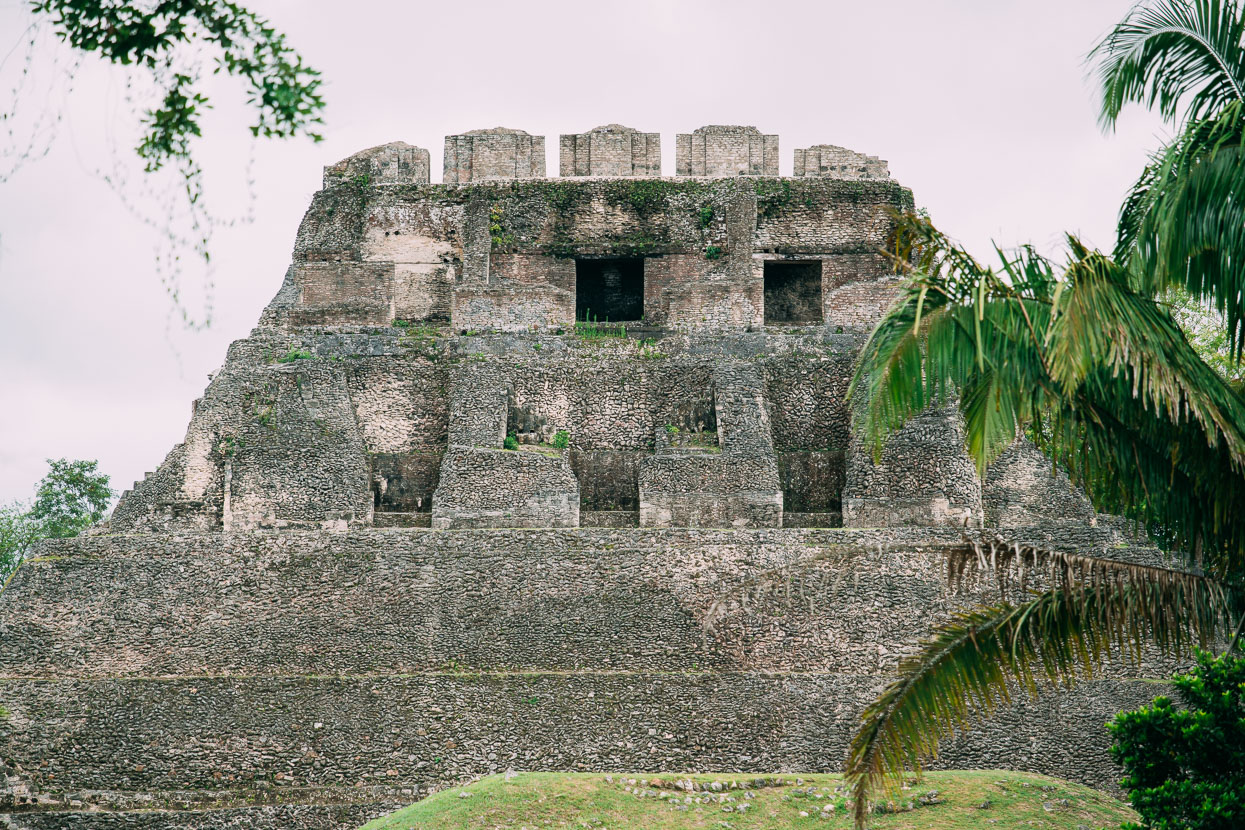
Xunantunich’s finest ruin, the partially restored El Castillo.
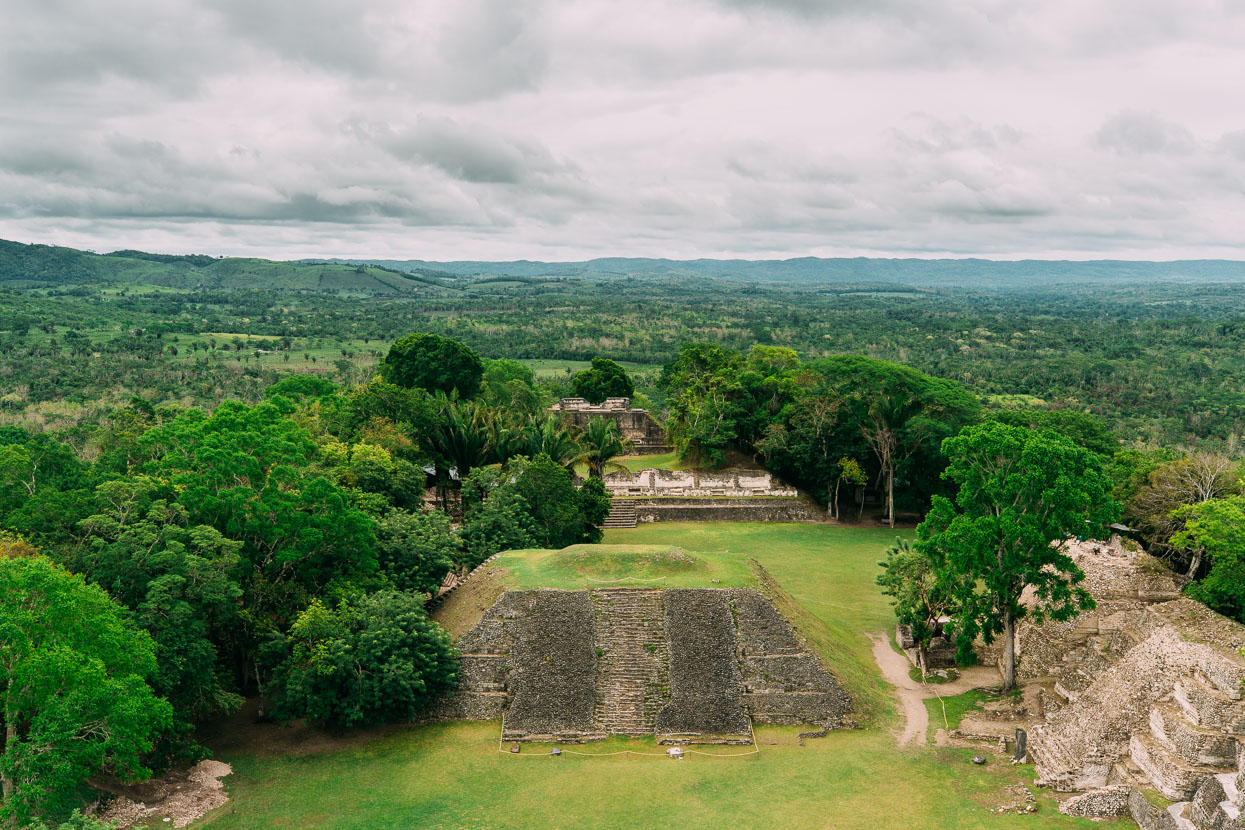
With a great view east into Belize from the top.
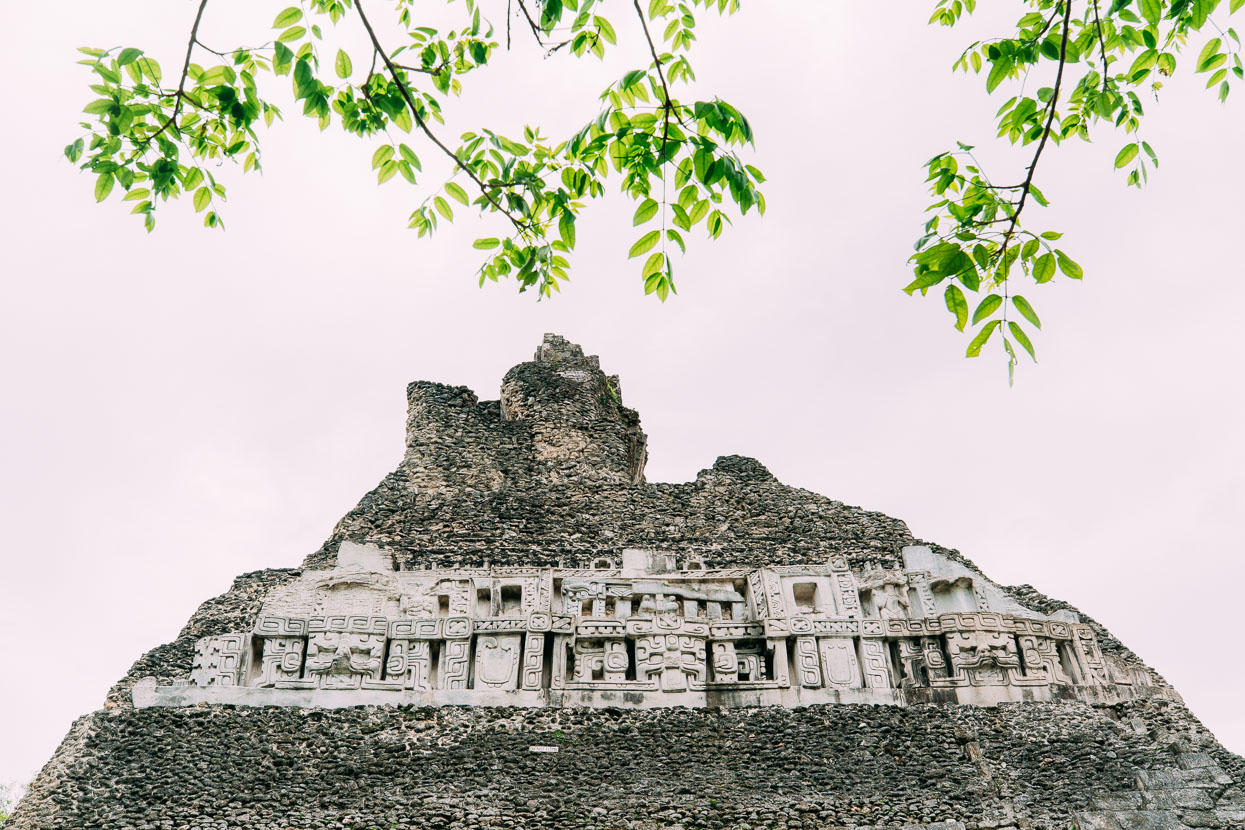
Stucco friezes on El Castillo. These are actually fibreglass replicas, overlaid on the originals to protect them from further erosion.
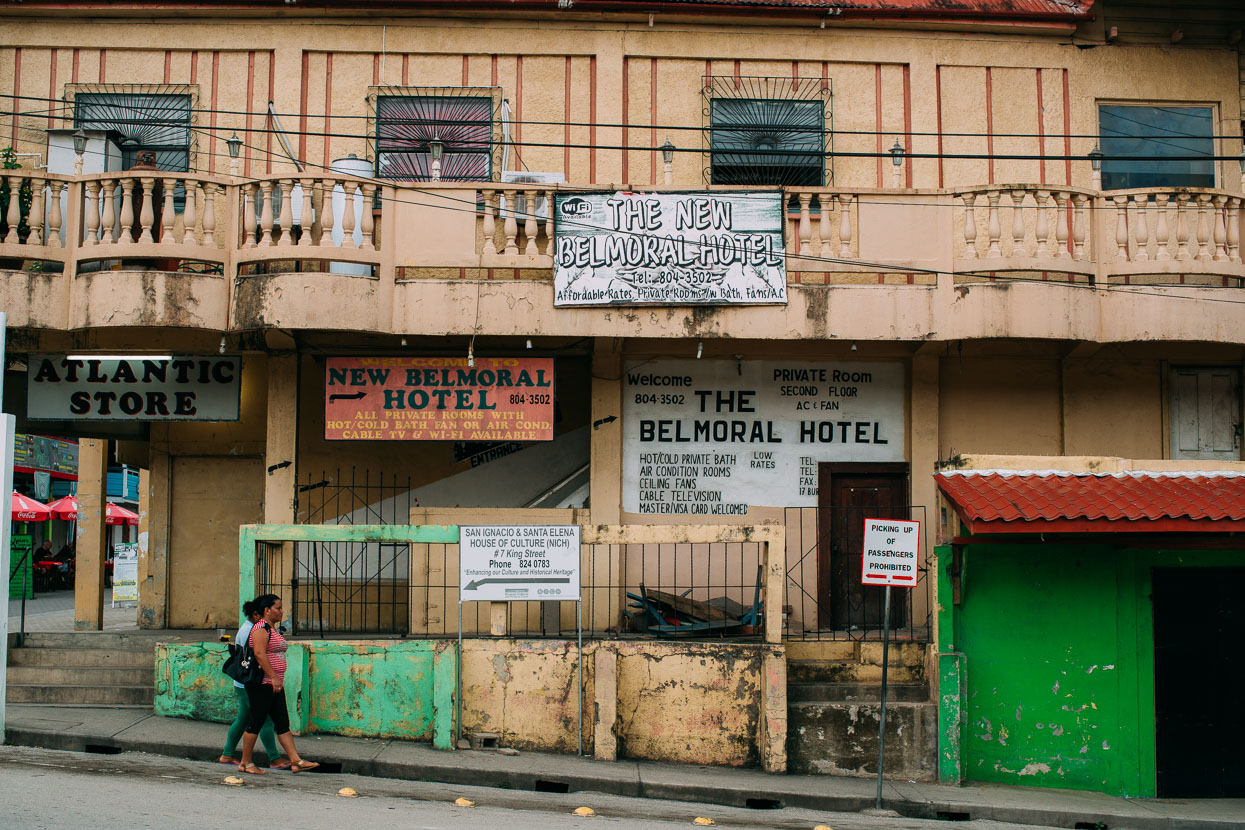
We rode on to the chilled tourist hub of San Ignacio and found ourselves a hostel. Just a short distance into this country we are amazed how different it is to Guatemala, at least in this region. On the street it’s not uncommon to hear three different languages being spoken at once: English (the offical), Spanish and Creole. The people too are different and the Caribbean influence is clear with African-looking people more common than ladino (mixed indigenous/Spanish).
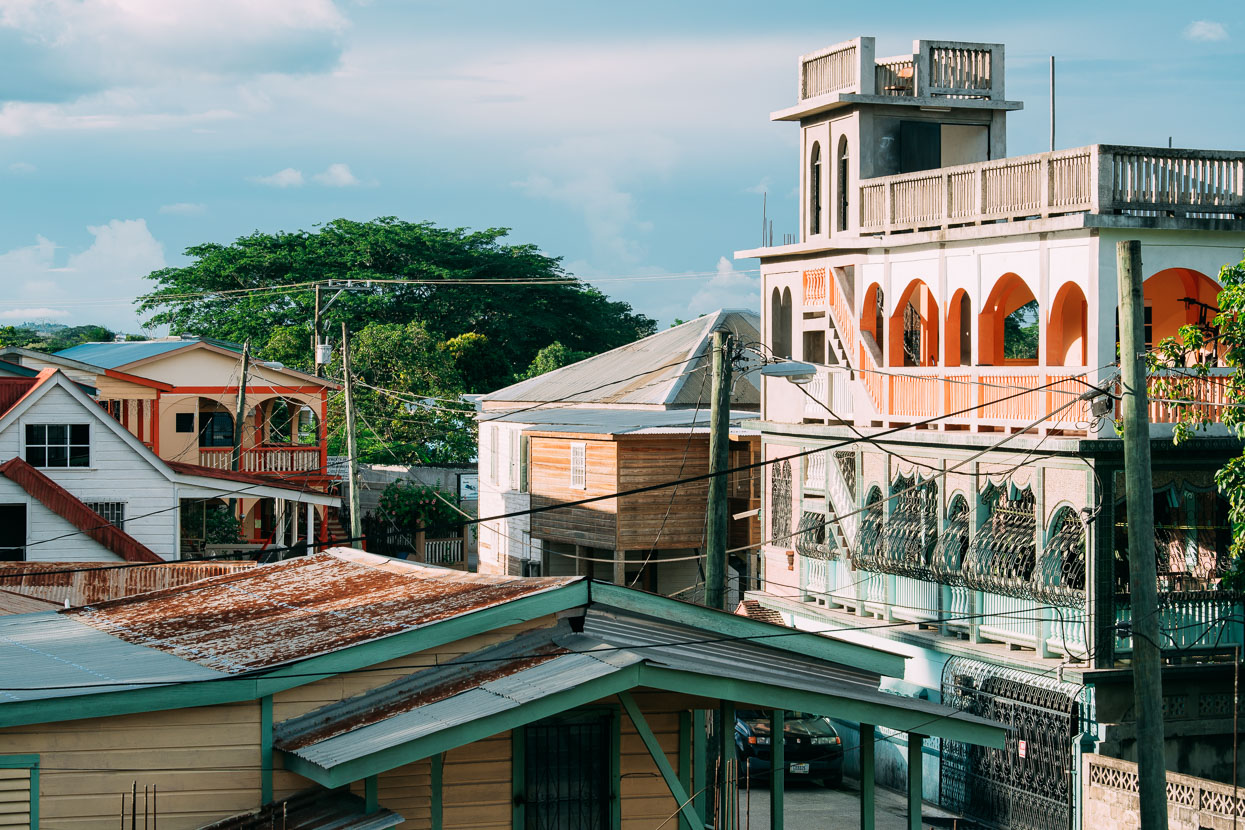
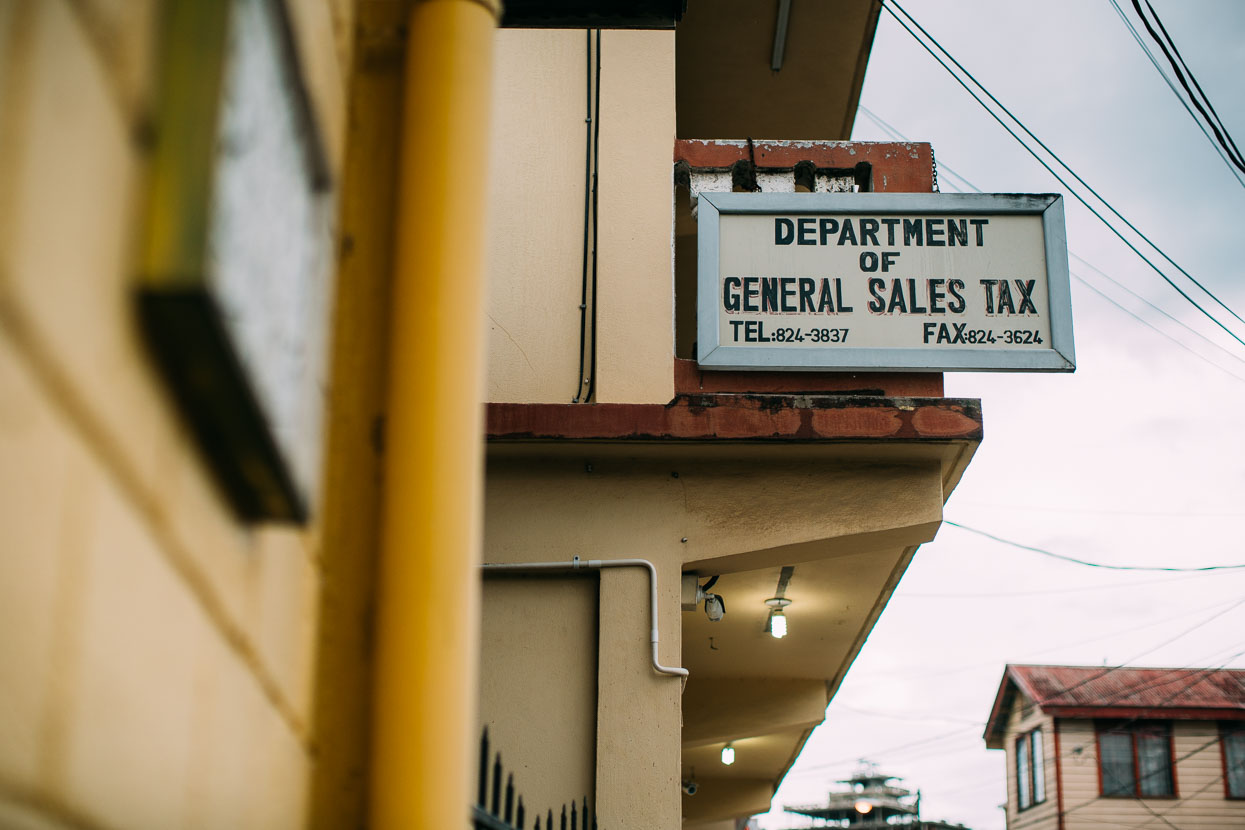
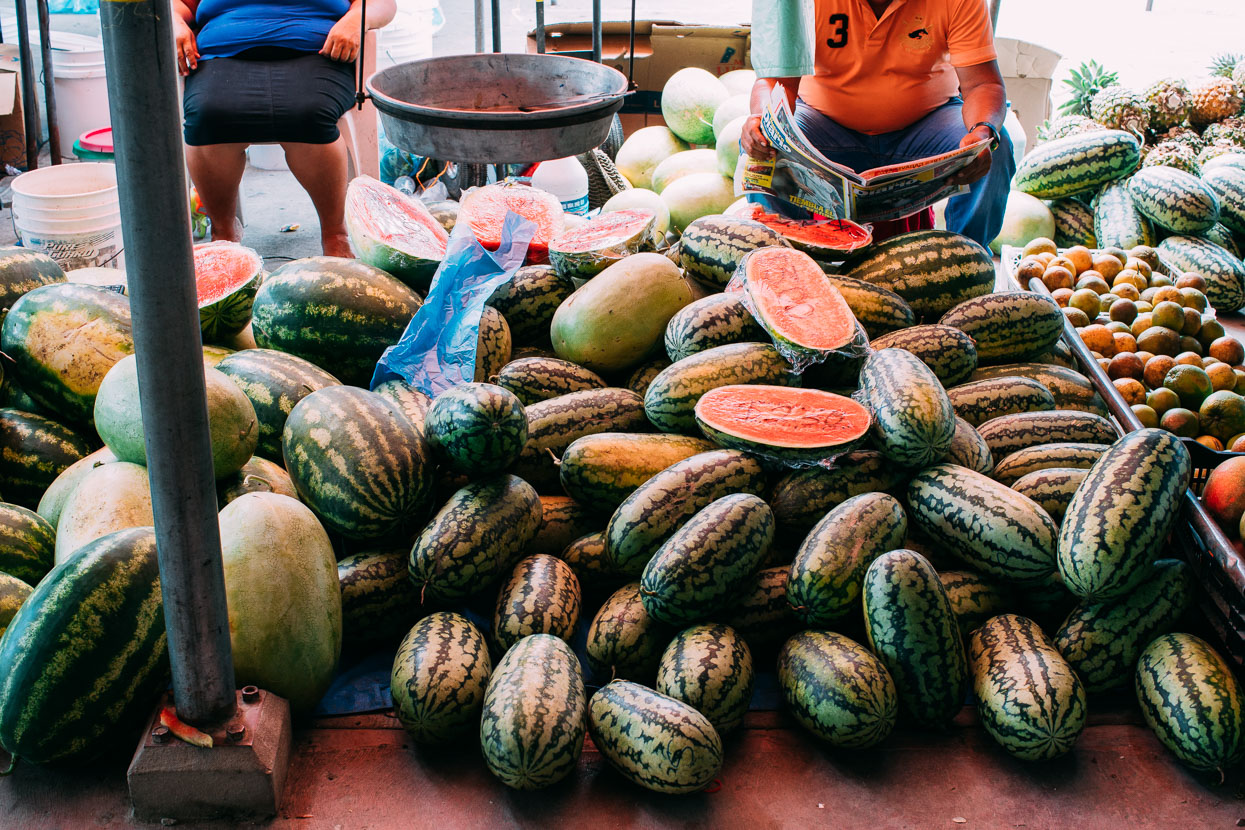
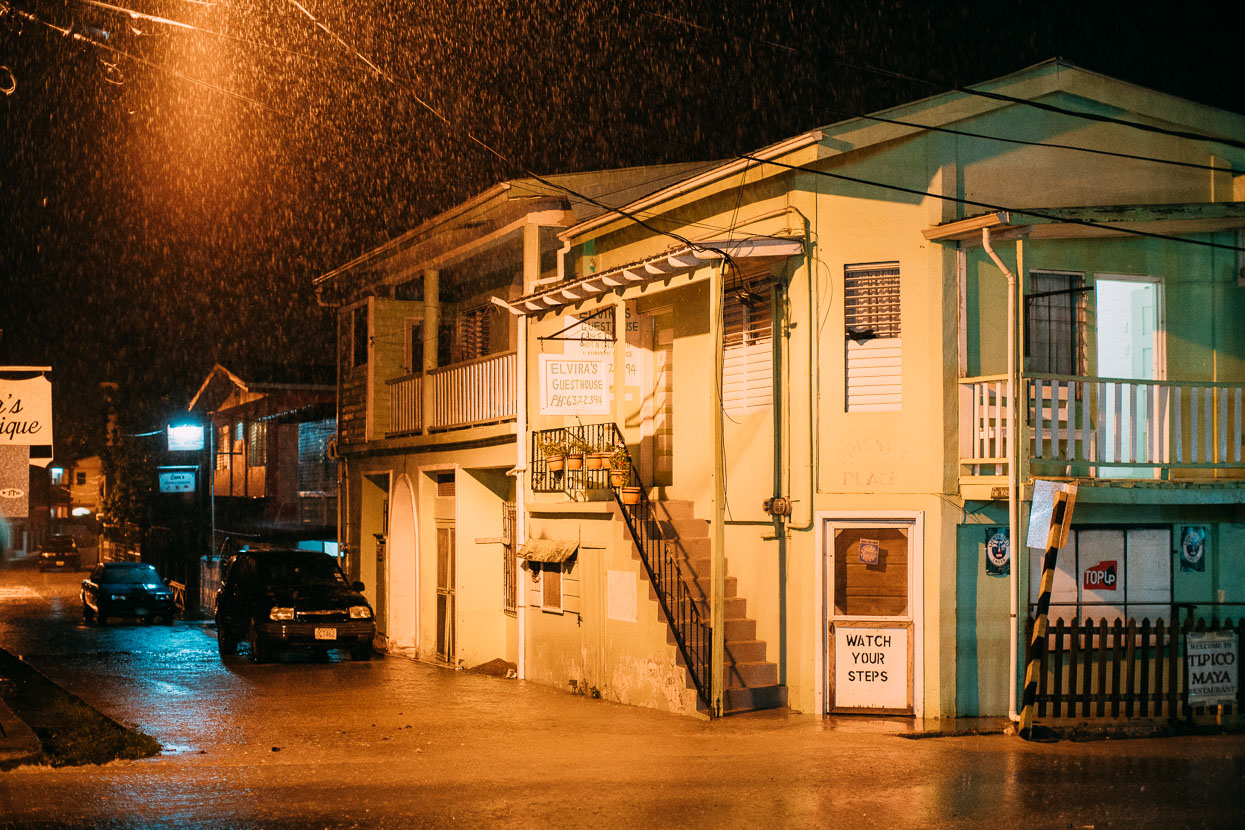
There’s no doubt we’re in the wet season here now, as tropical cyclones track up the east coast, and the TV brings the latest storm alerts. It’s rained steadily here for the last three days. But we’re looking forward to getting out of town and seeing more of this intriguing country.
The food is a change from Petén’s fried chicken and beans and tortillas. We’re discovering fry jacks, papousas and seeing more vegetables than we’re used to. NZ$4 to NZ$7 will get you a full sized and tasty meal from one of the many rustic restaurants about town.
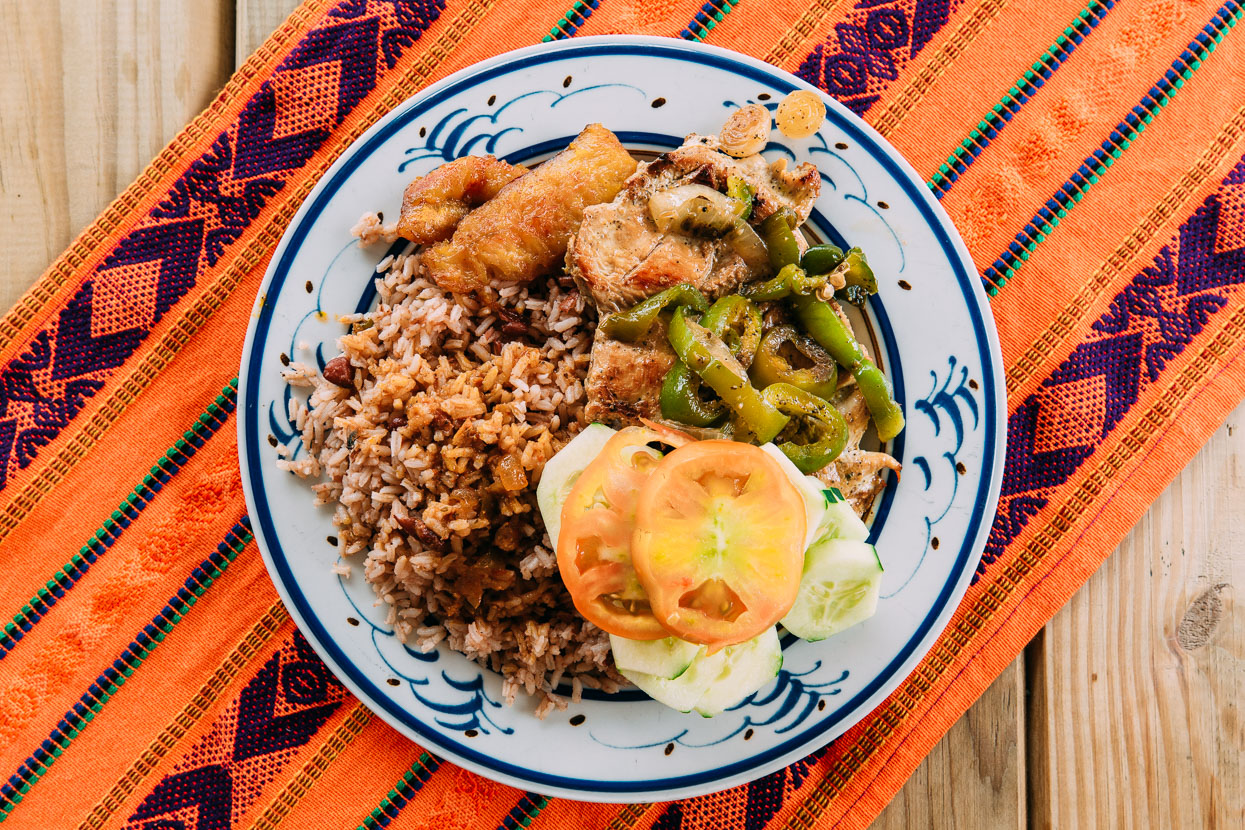
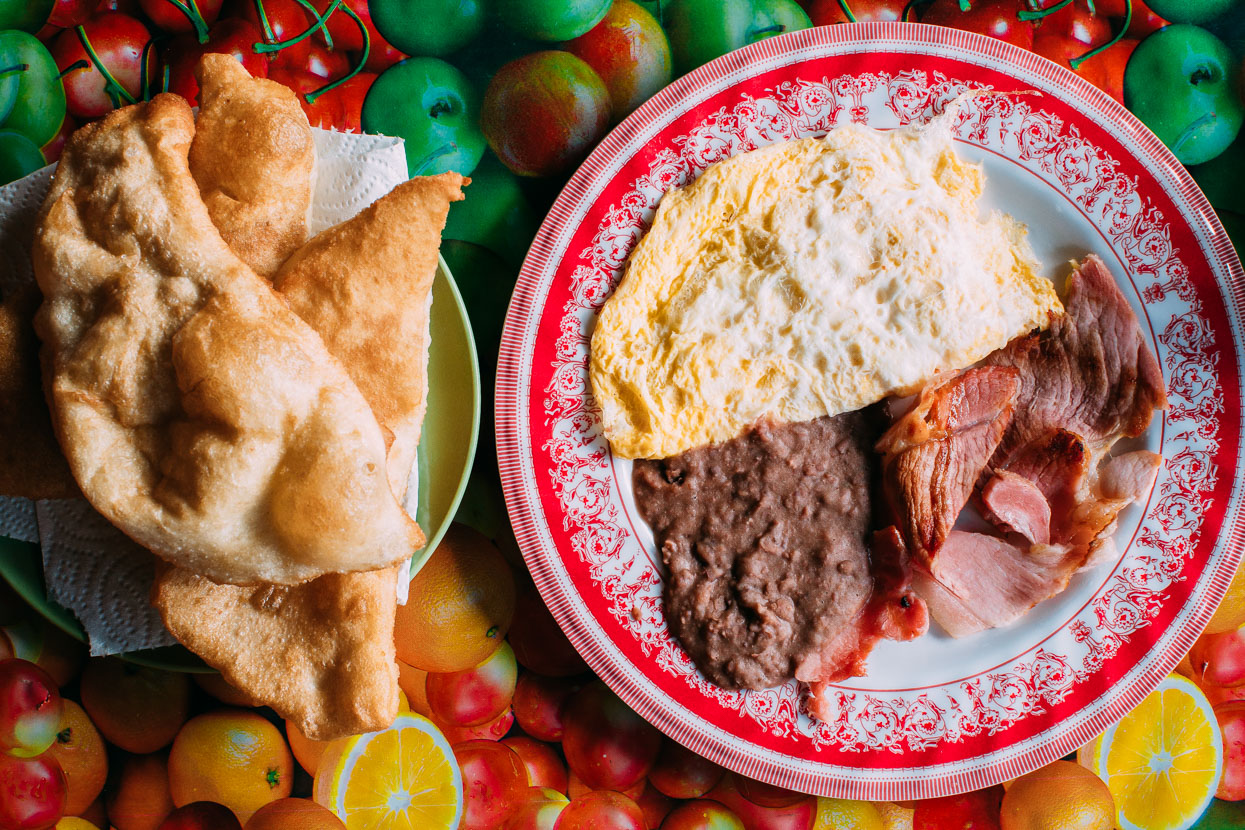
Thanks to Biomaxa, Revelate Designs, Kathmandu and Pureflow for supporting Alaska to Argentina.

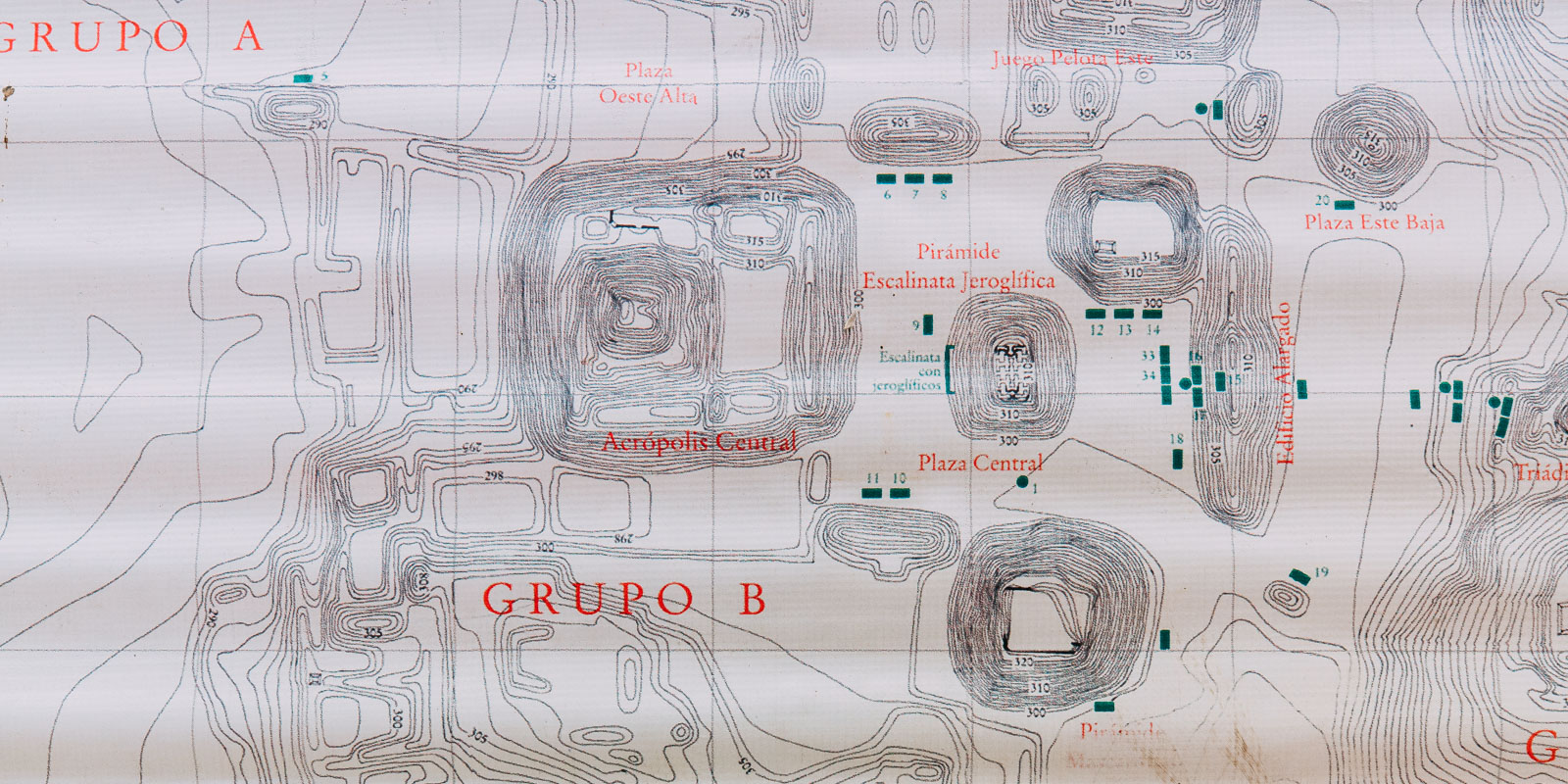





tu meke! you guys are uber rad….thanks for delivering the fresh stoke, its a loaf of yummy bread hot from the oven straight to my vitamin D depleted brain, especially this time of year (lyttelton fest of lights was invigoratingly moist this evening, so hopefully the alps are copping it hard!) my eyes are fiendishly yearning for the intense greens in your images, and my ears craving the thick buzzing resonance of selva humeda. big gratitude for the contrast with your universe! i really appreciate the presence in recent posts – slowing down and savouring things a bit more is an excellent call. chur for the inspiration team, happy trails 🙂
Ha ha – cheers JV. Yes we are loving it here and can’t wait to see more. Belize a bit on the touristy side, but looking forward to more Guatemala – and the rest! Take it easy and hope the NZ winter’s a good one!
Thanks much for splendid and thorough content, well written. Will be off for the third time in the same areas this winter.
This year once again I’ll be spending time at Maya Pedal in Itzapa near Antigua.
Thank you Dave. A fascinating and inspiring area! Looking forward to more as we ride back west to the Antigua/highlands area soon. Plan to study more Spanish there and ride a lightweight loop north in the maya highlands (north of Lago Atitlan). When will you be at Maya Pedal?